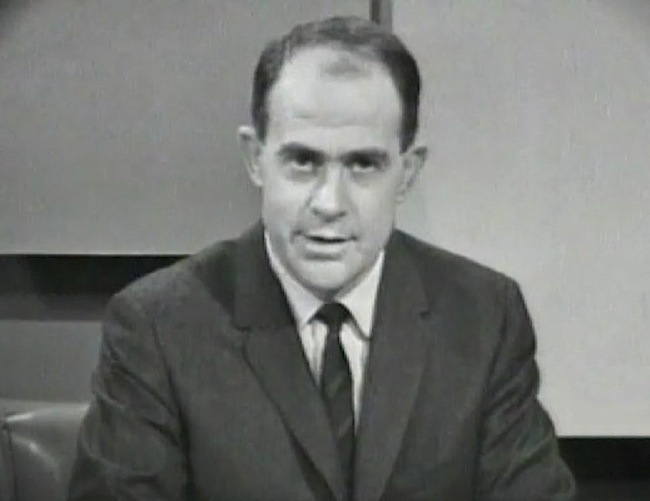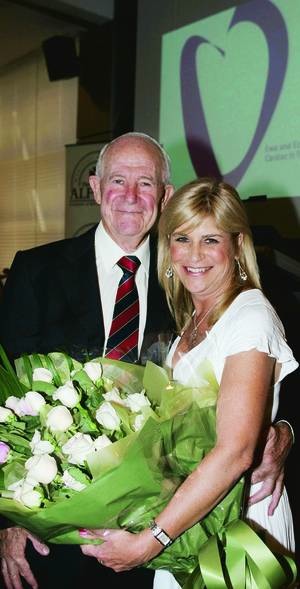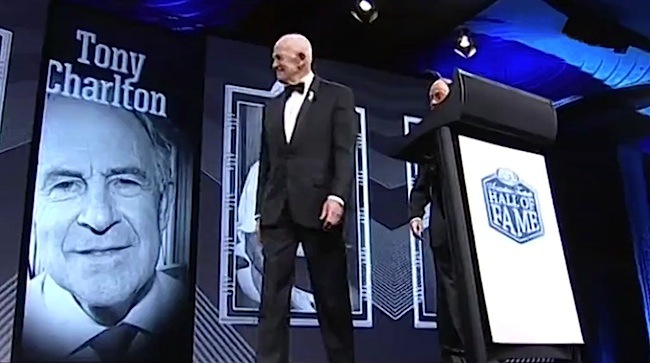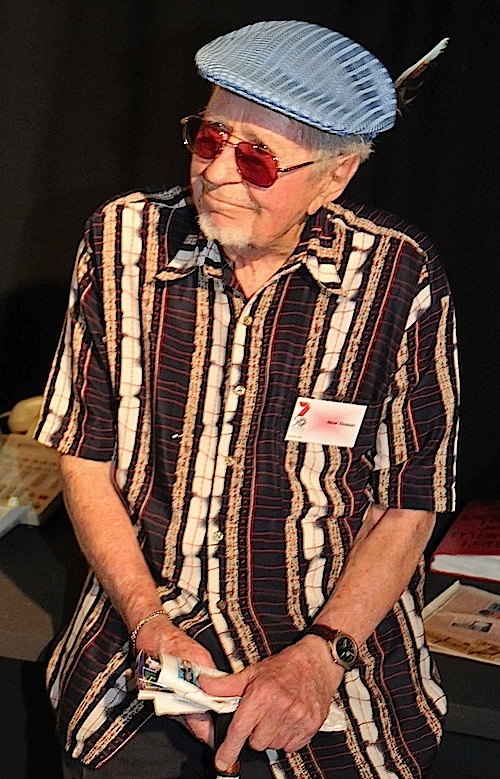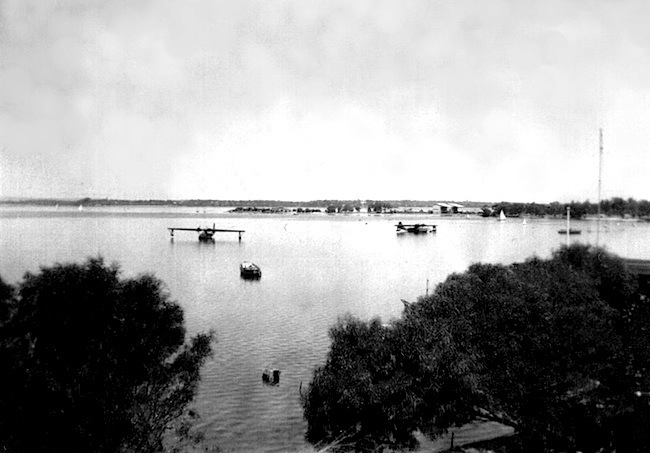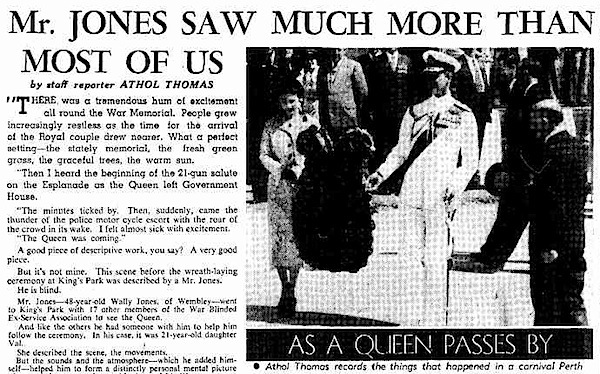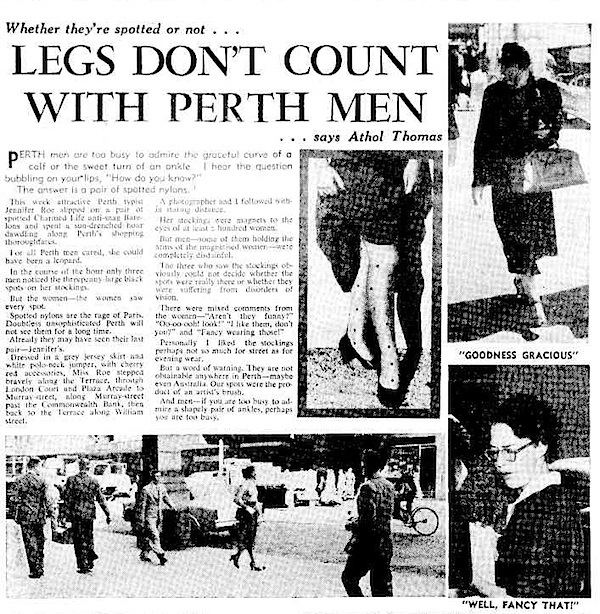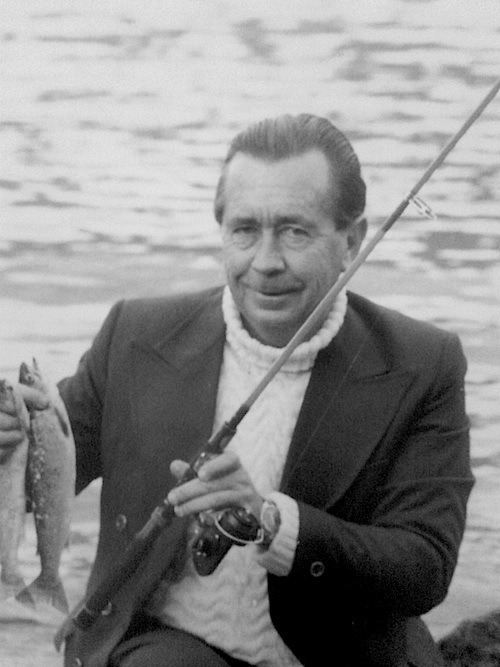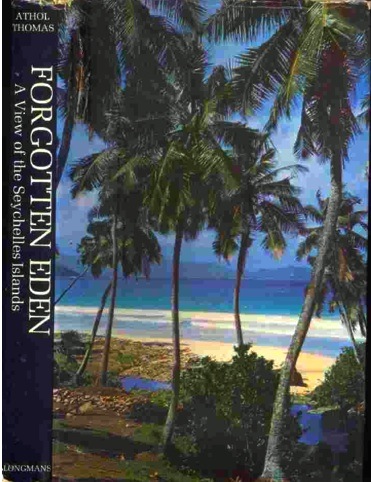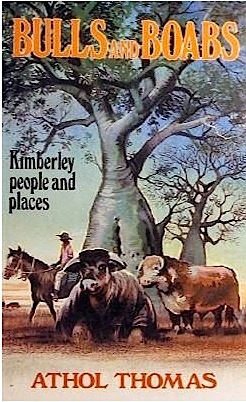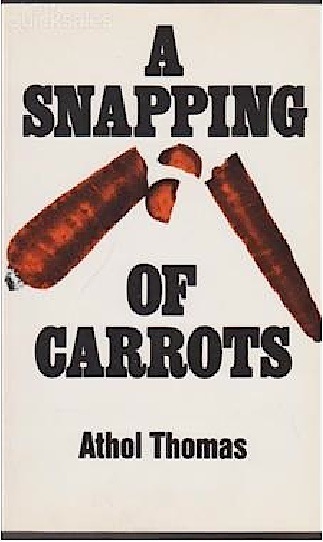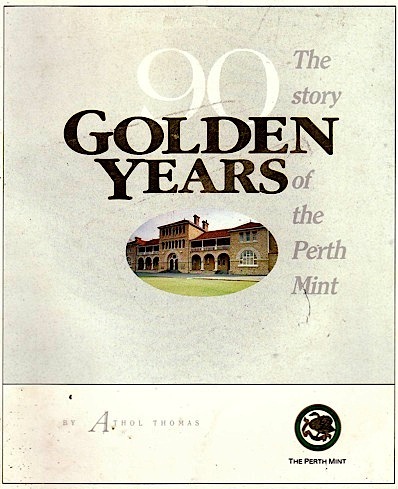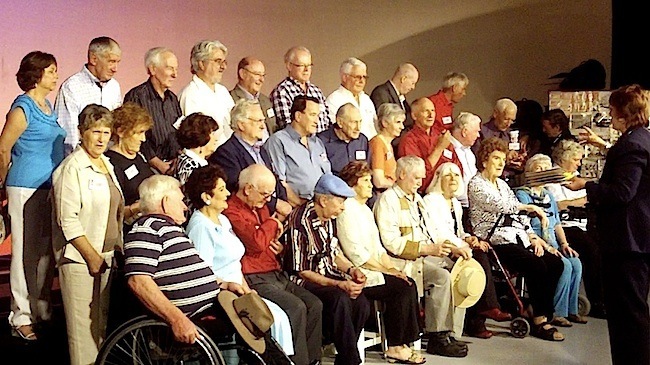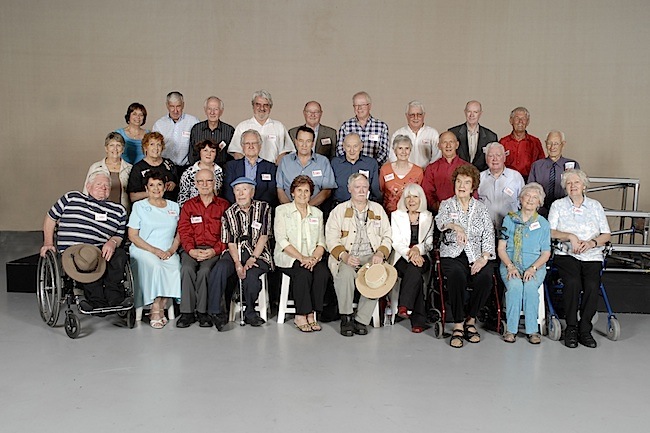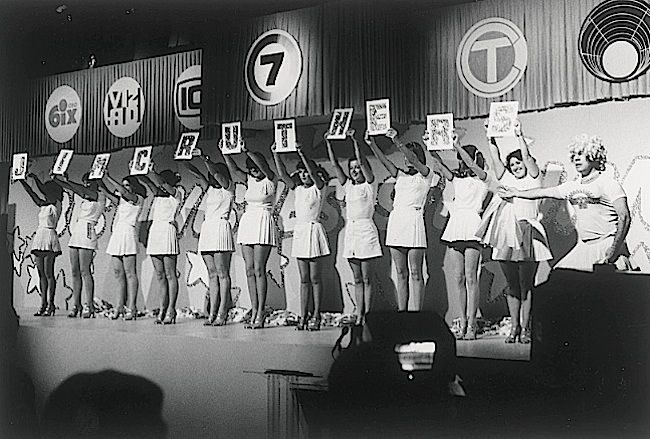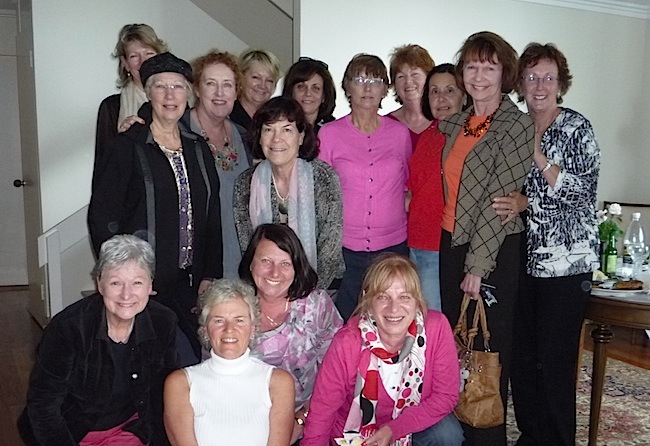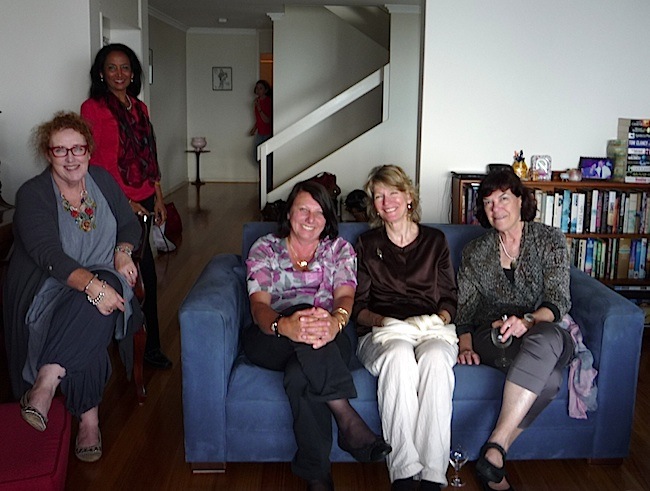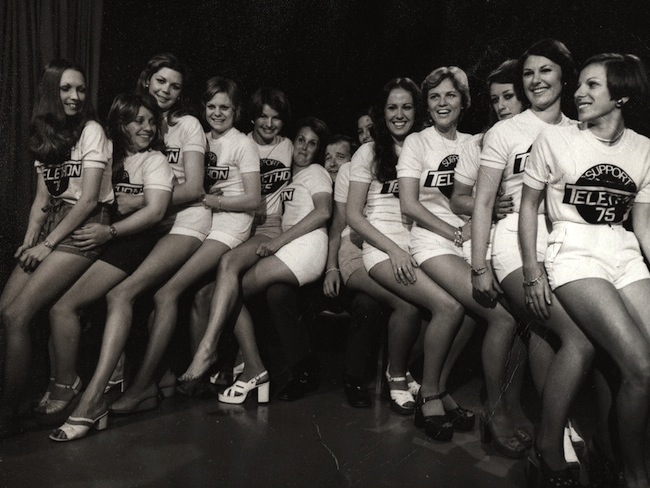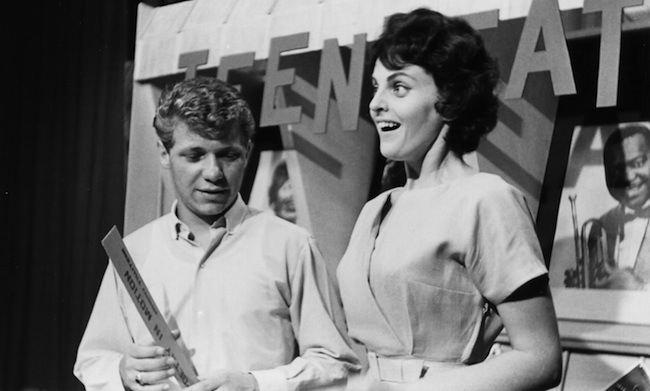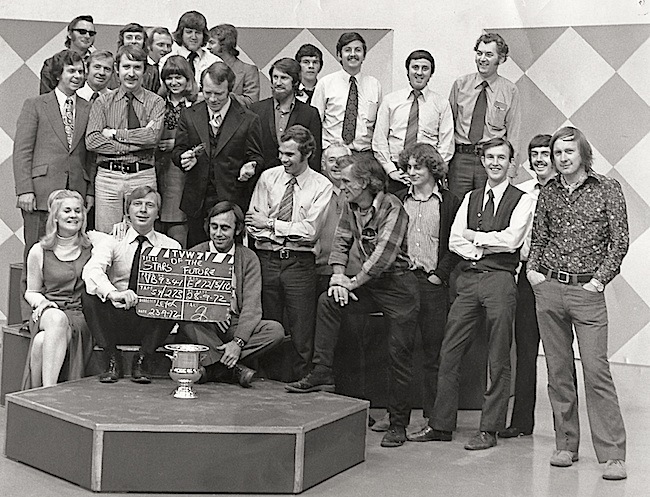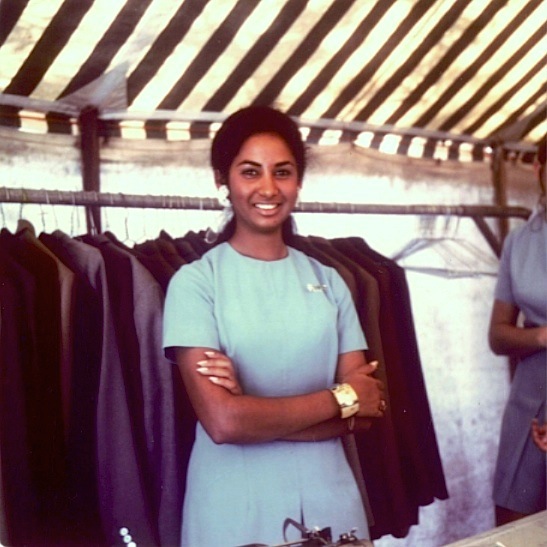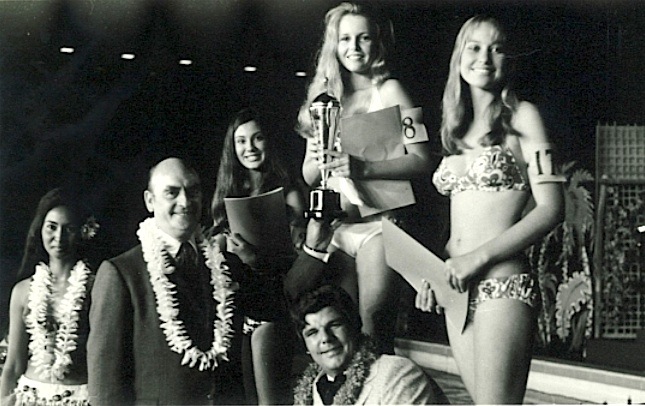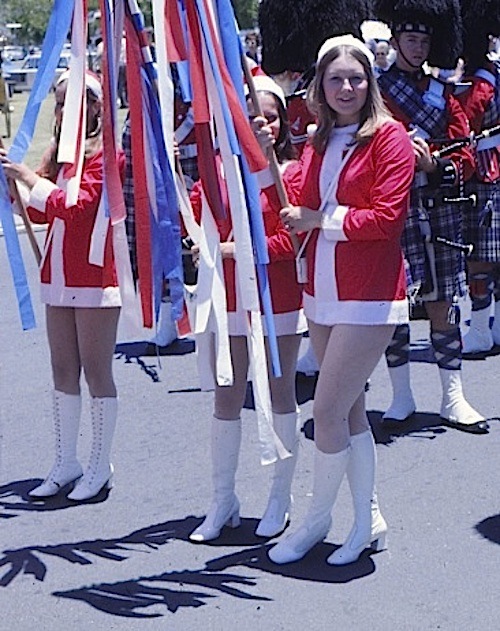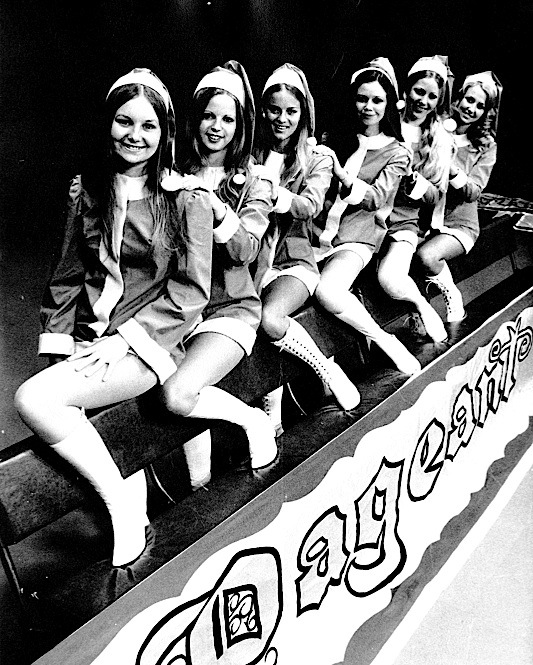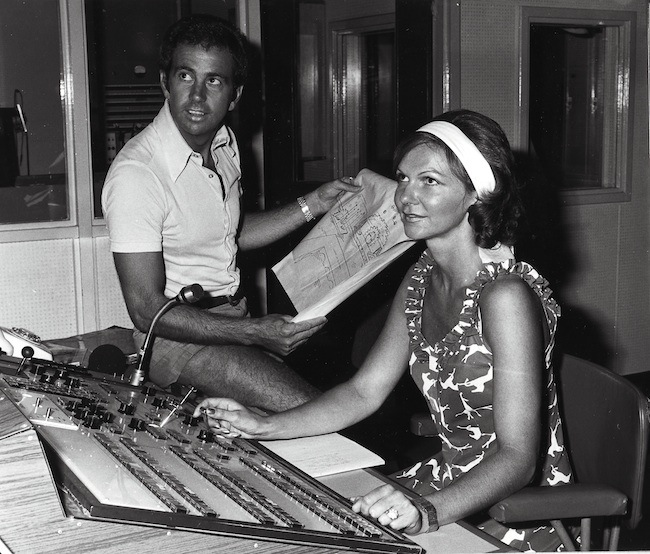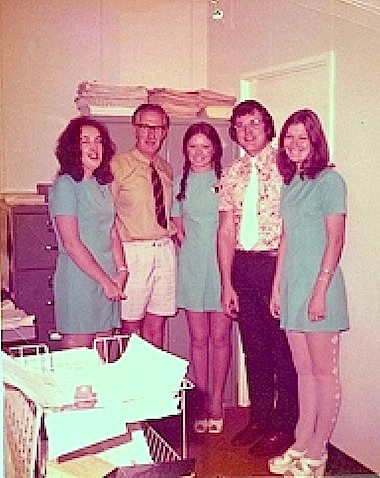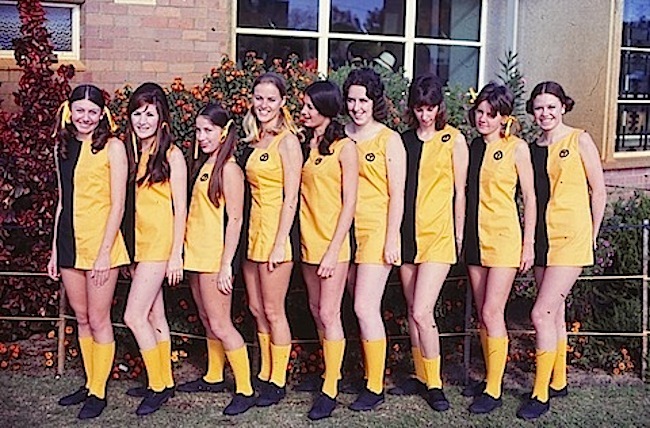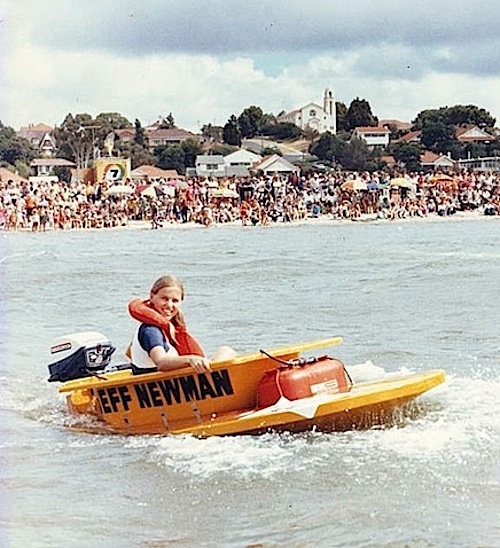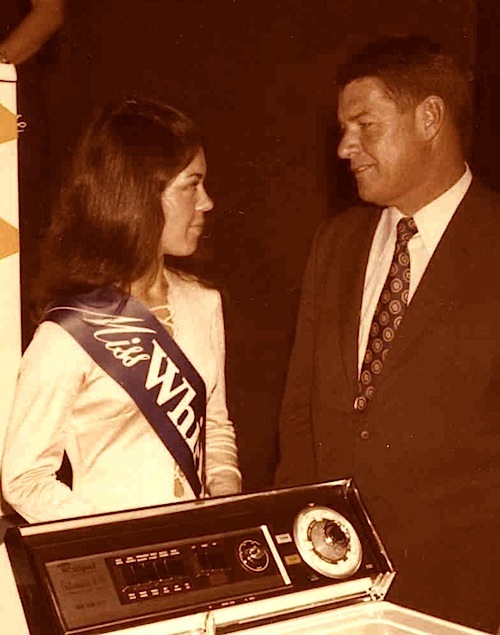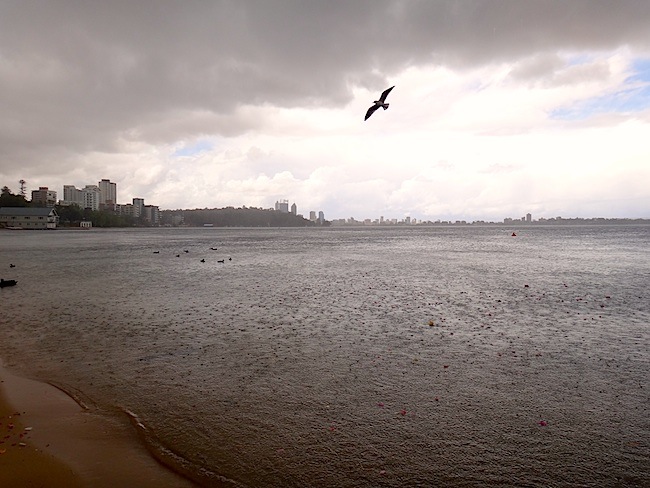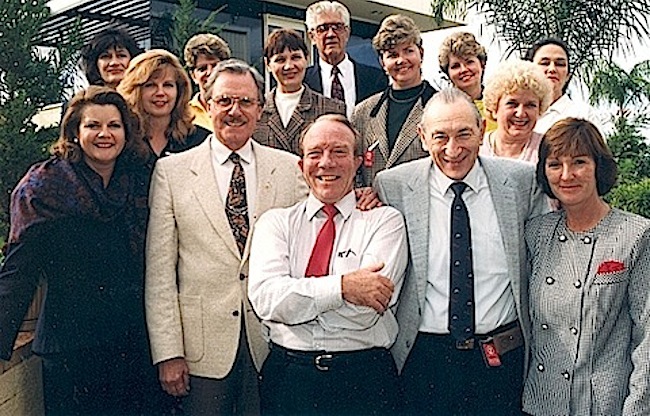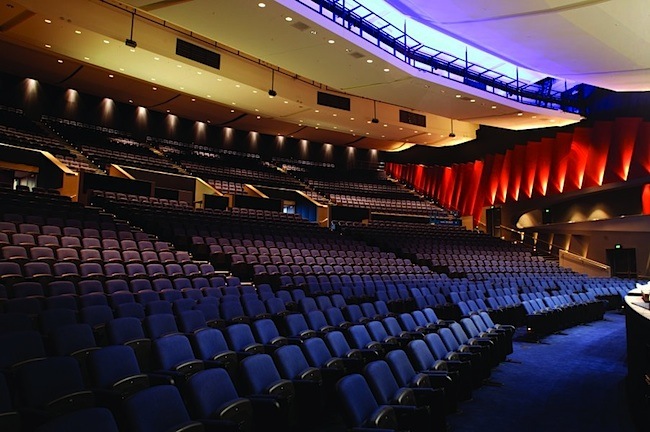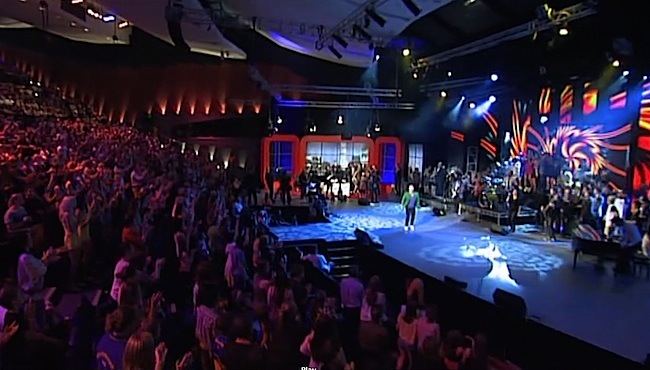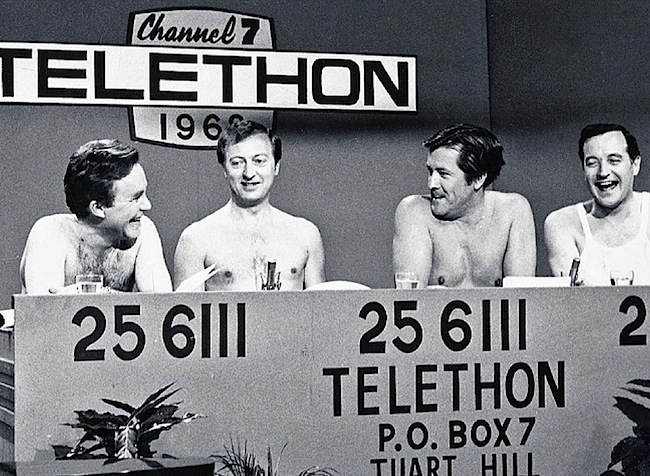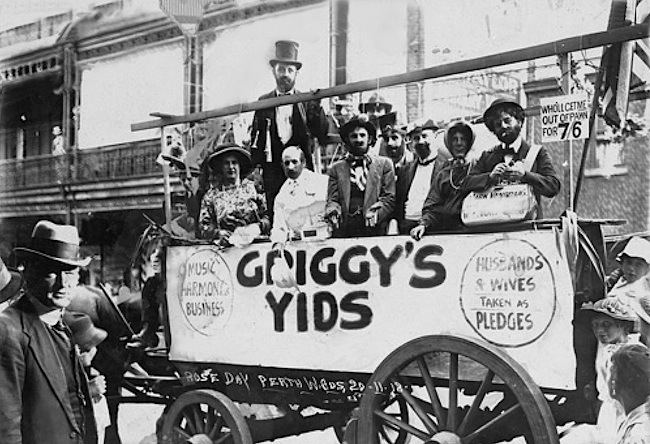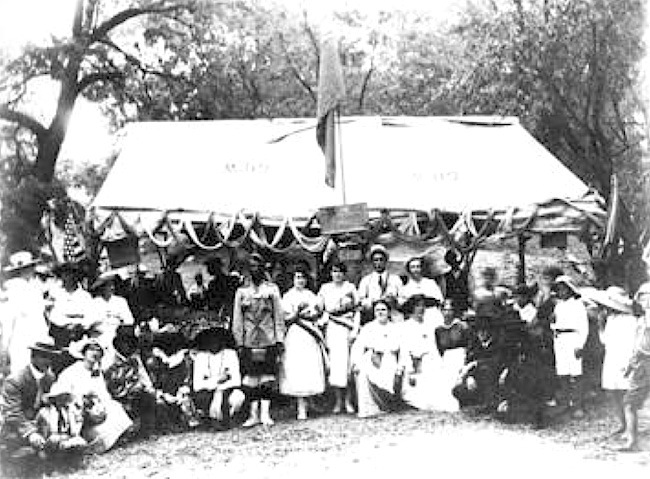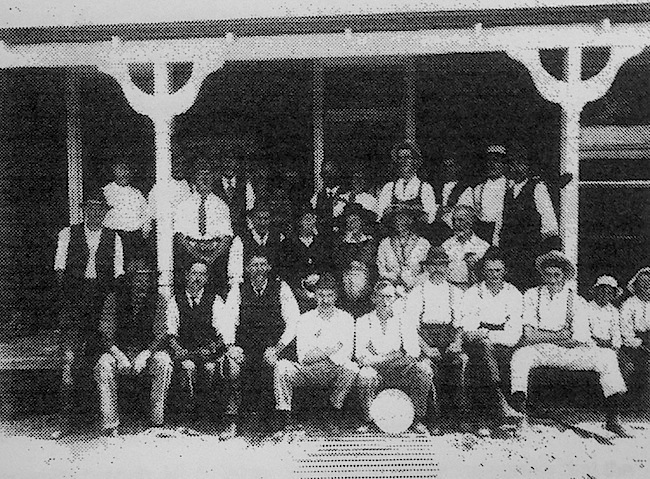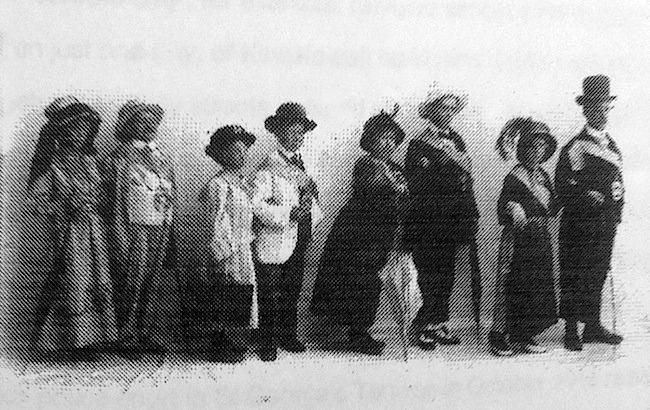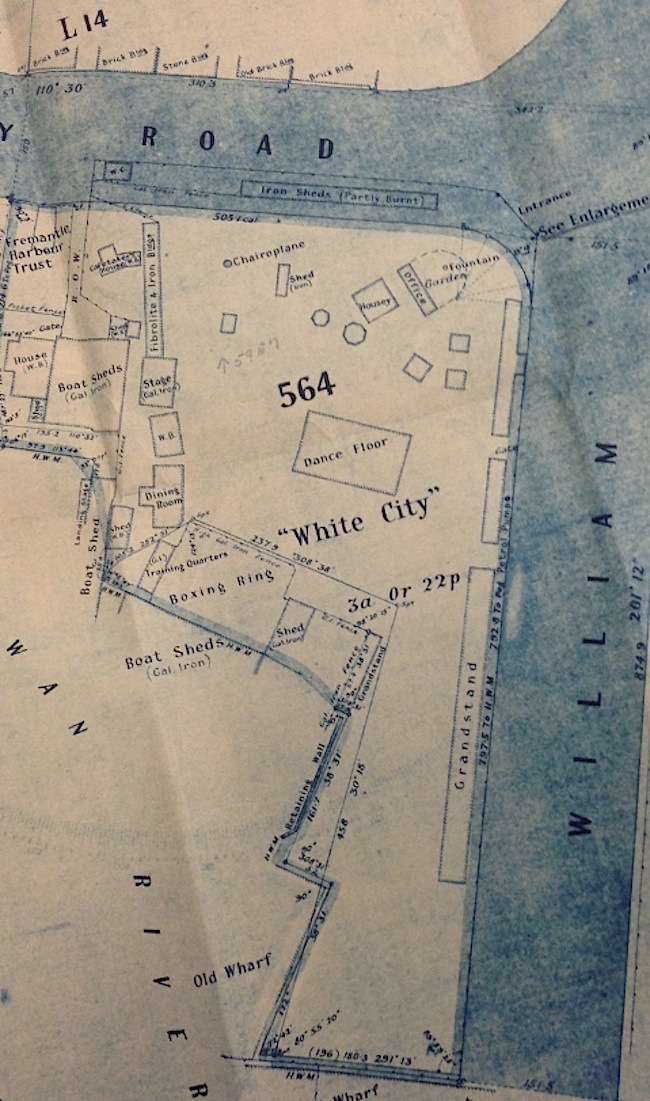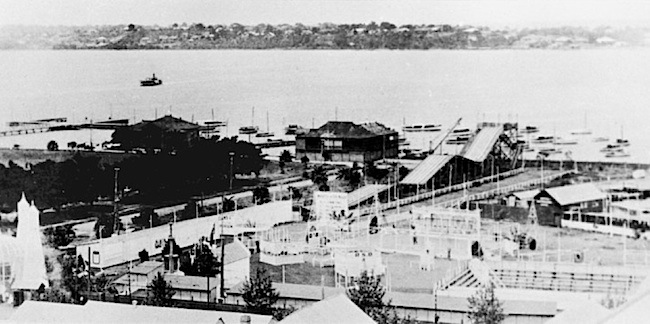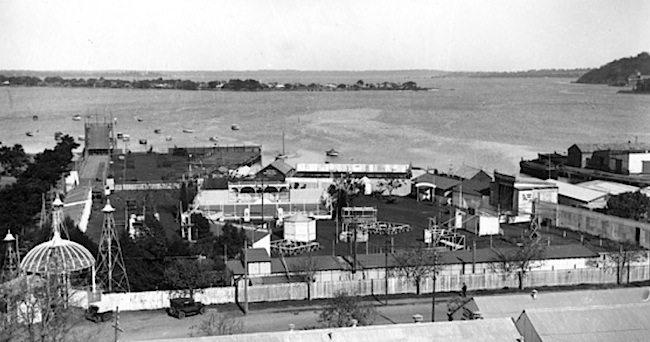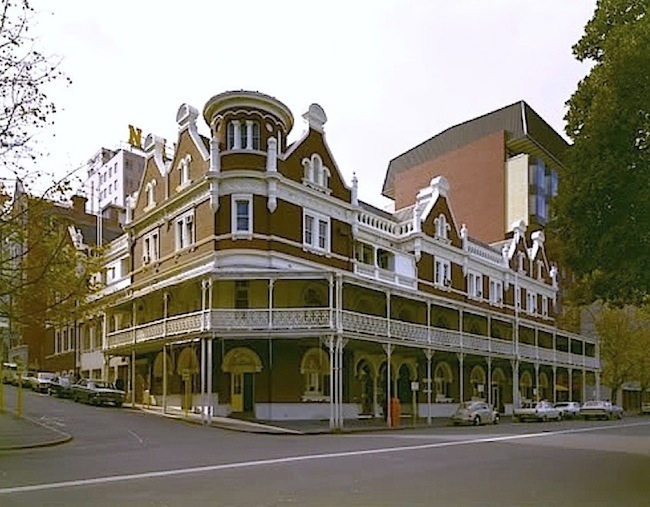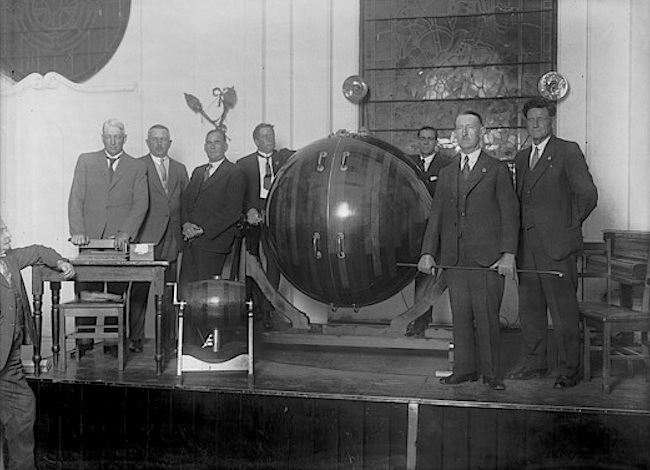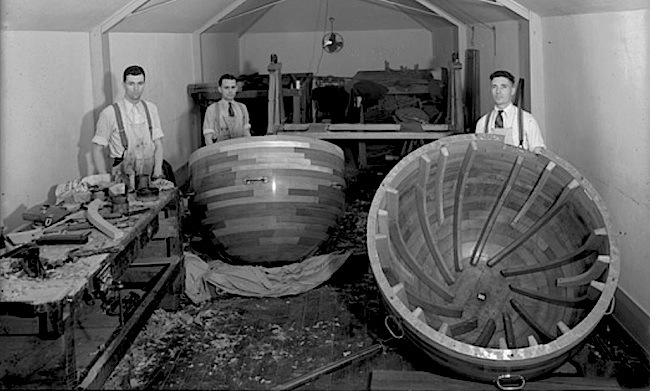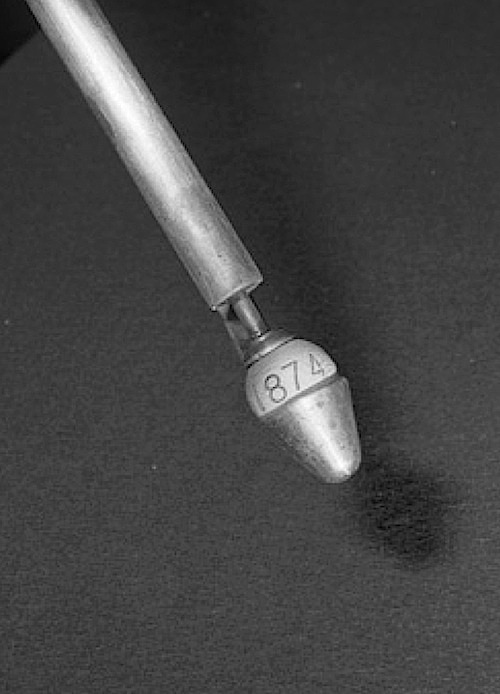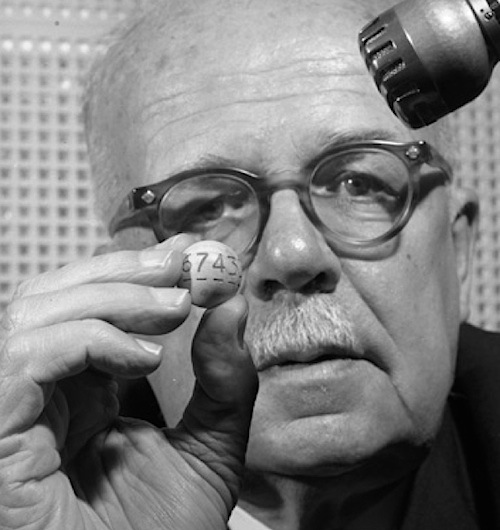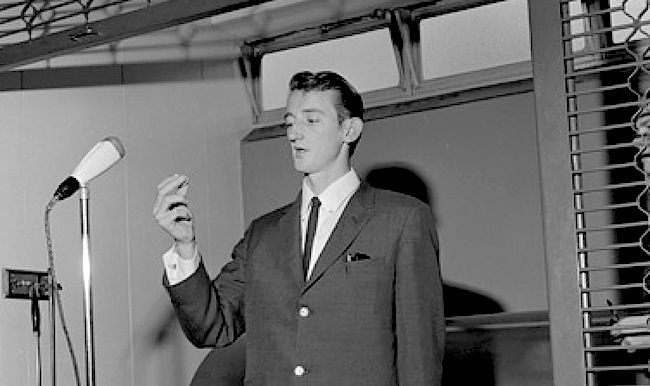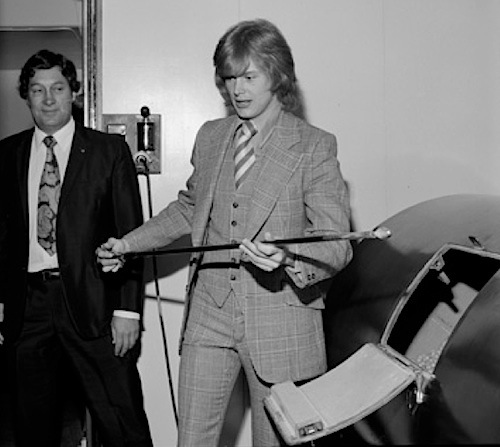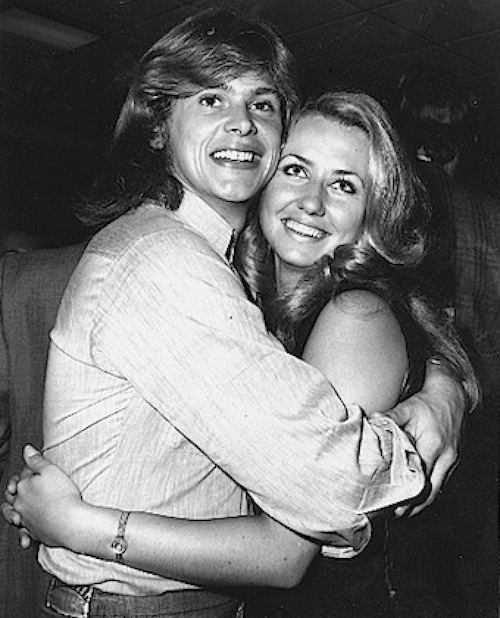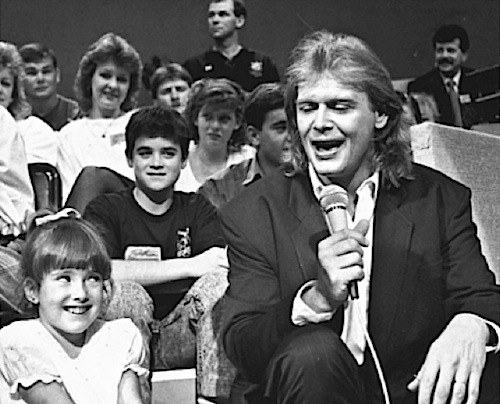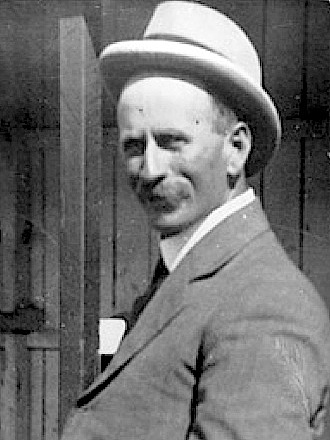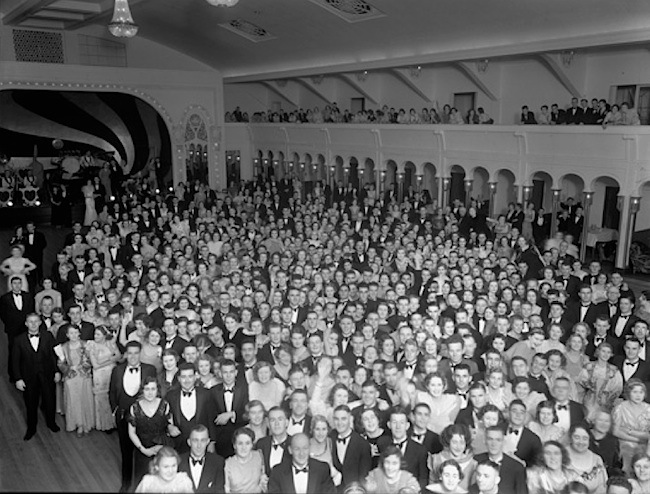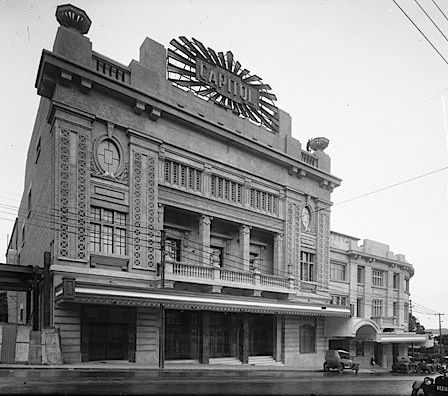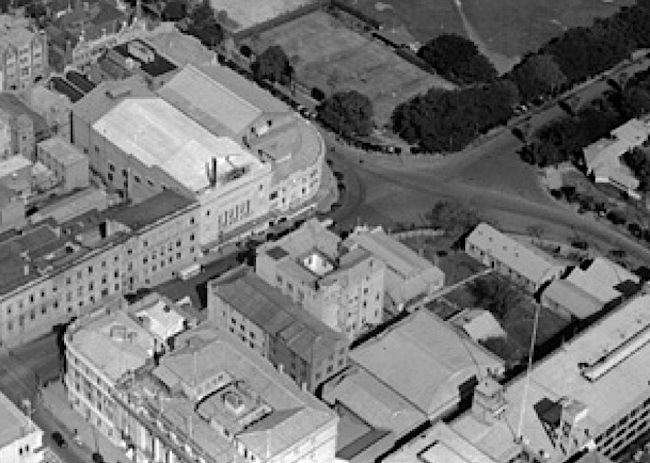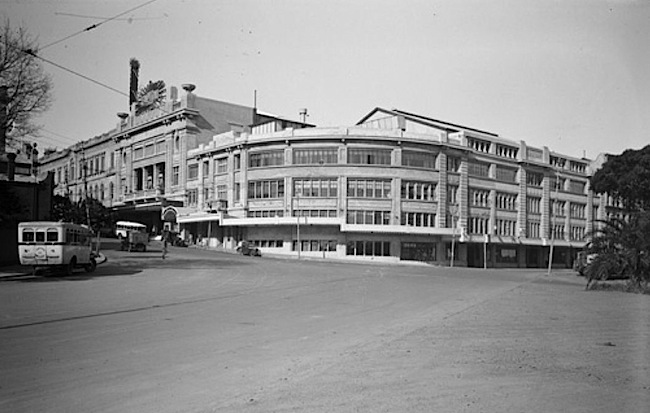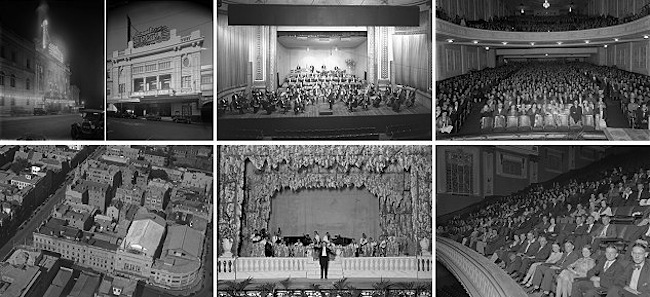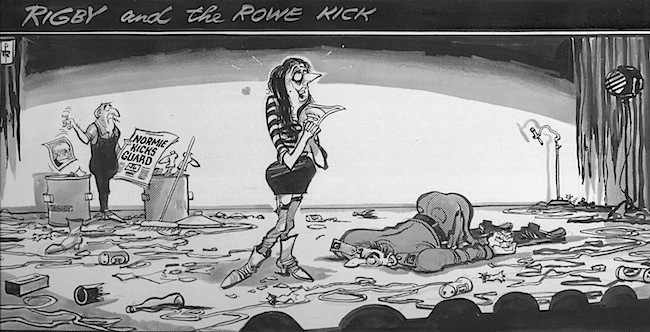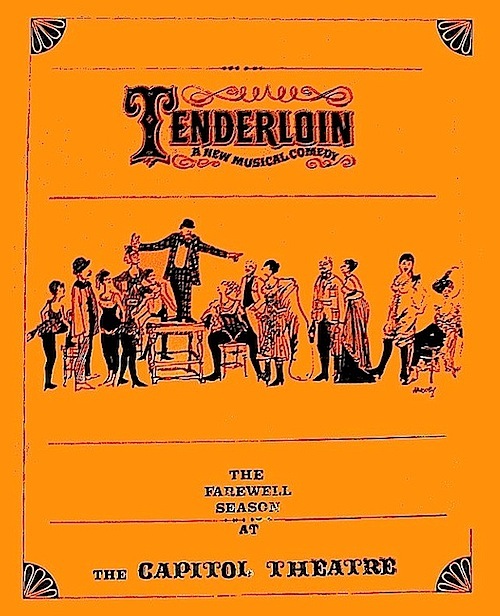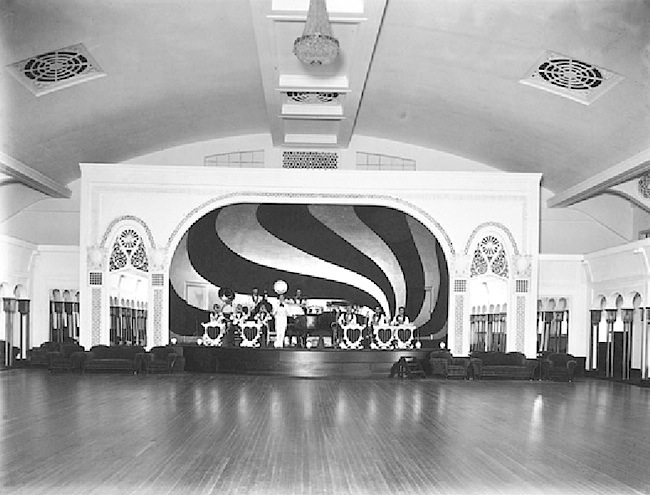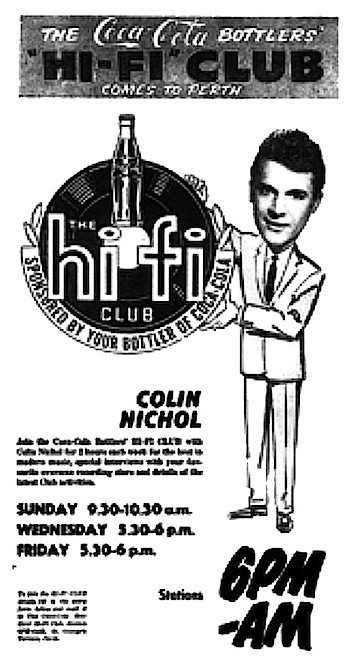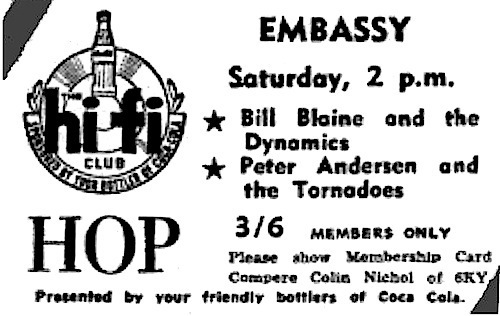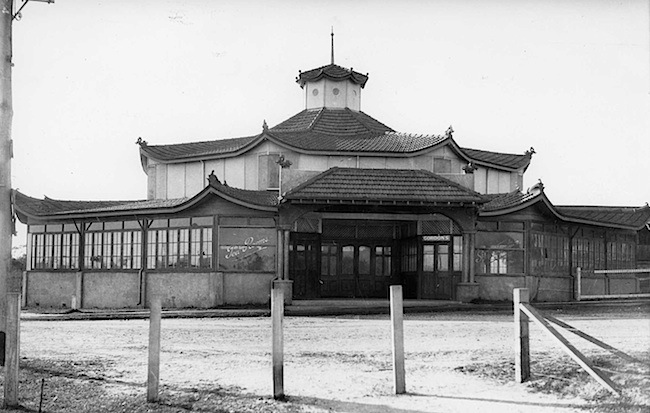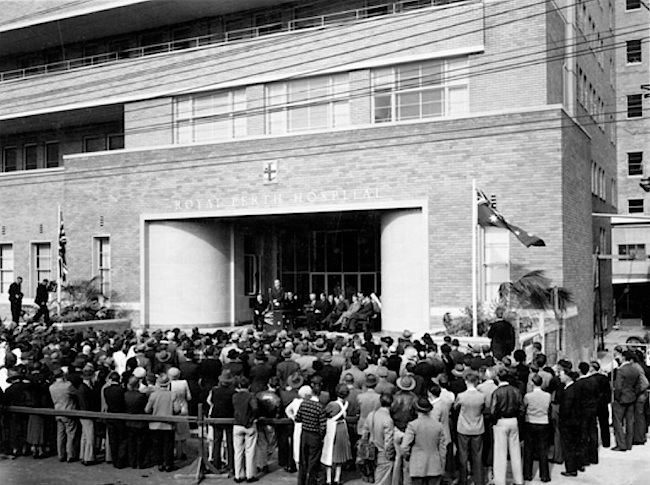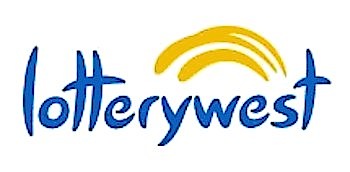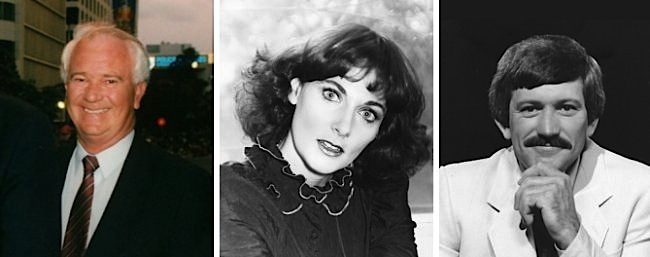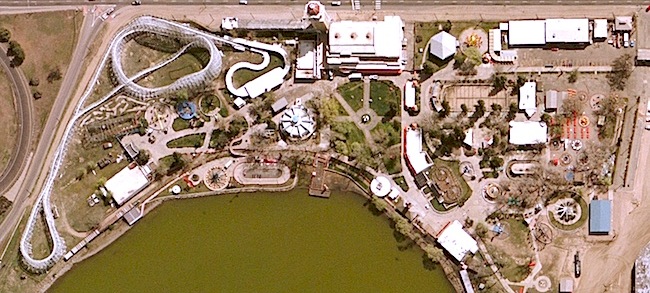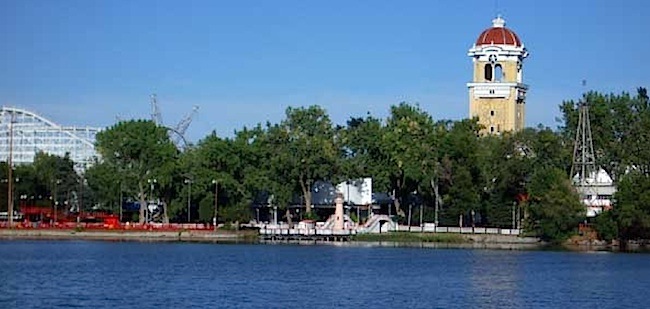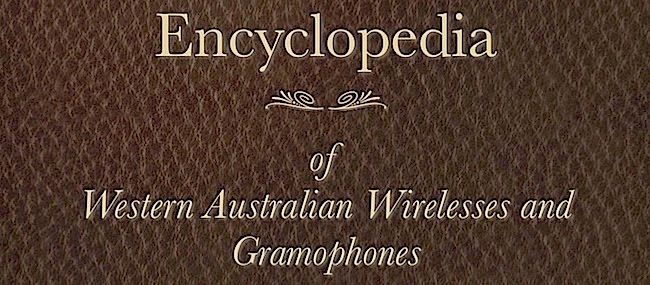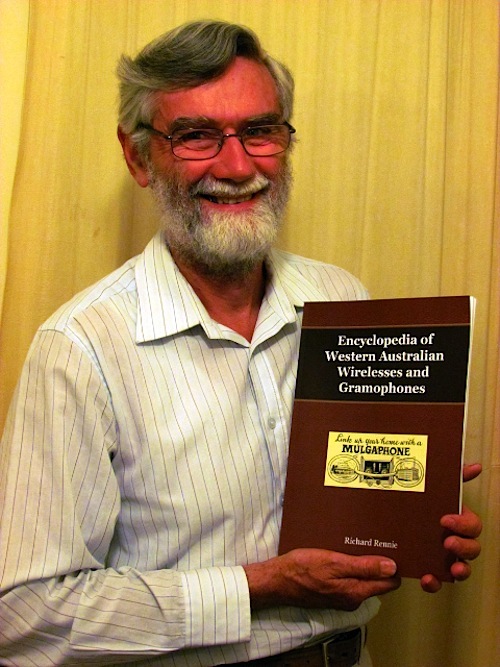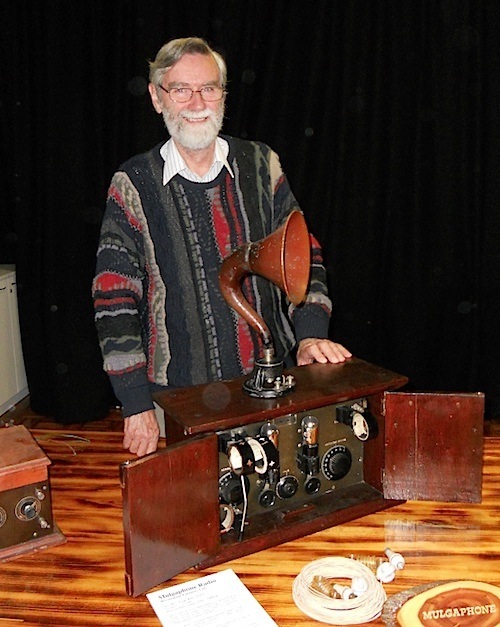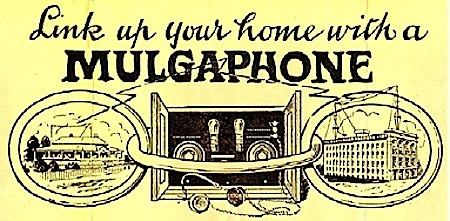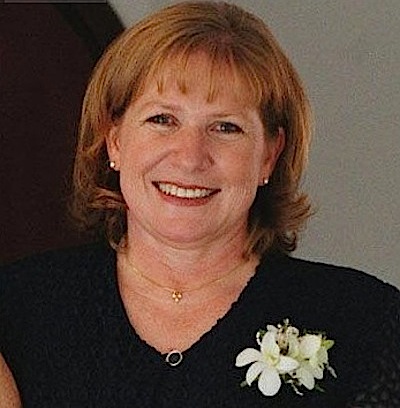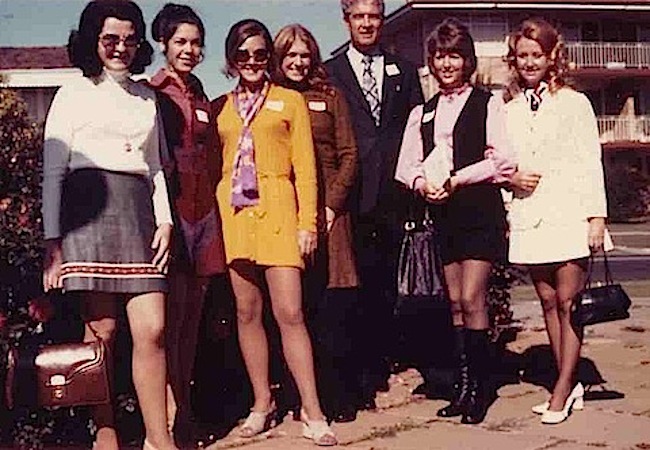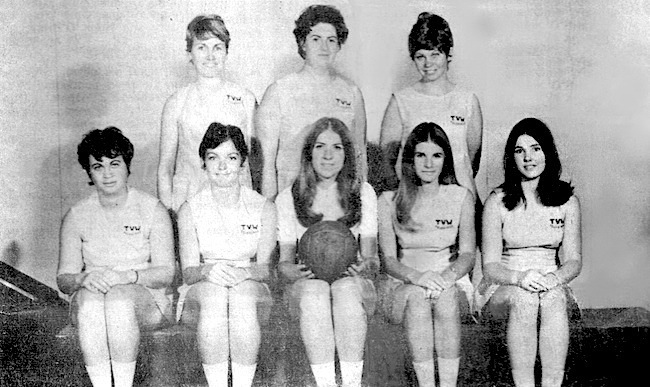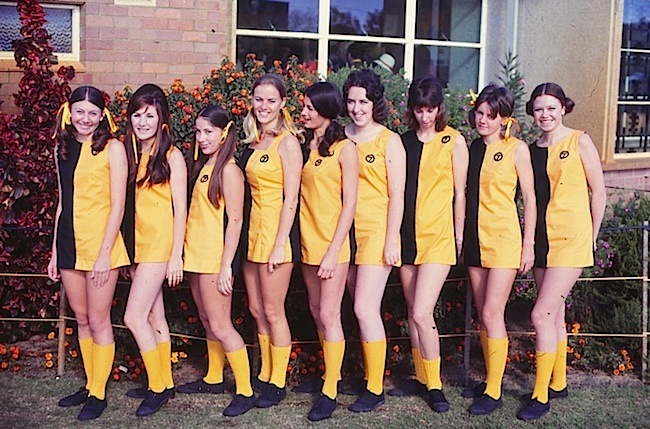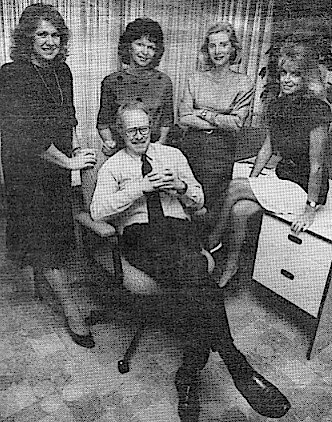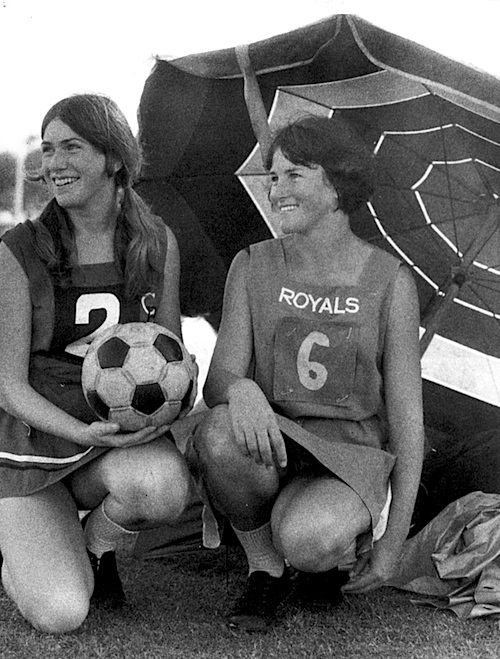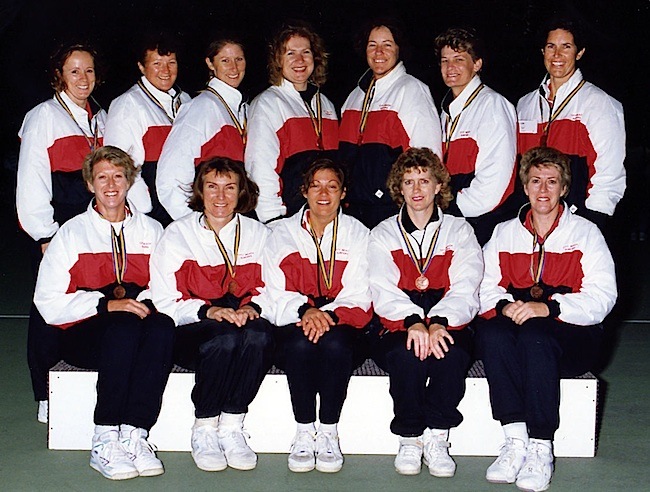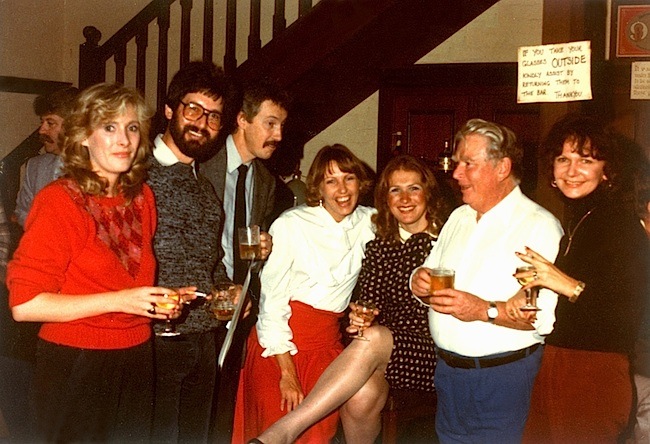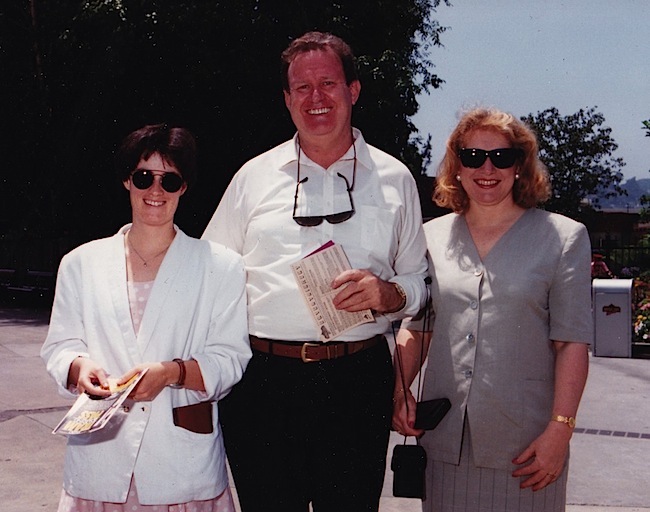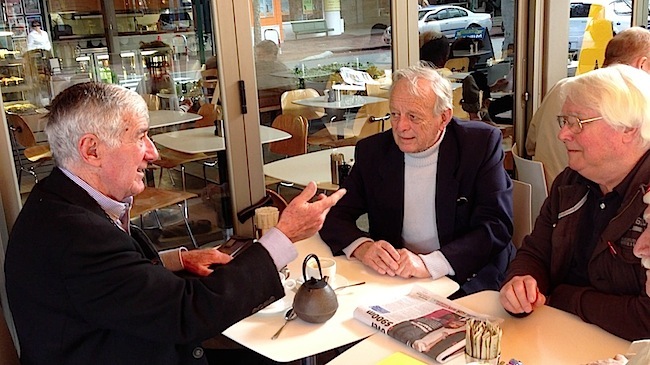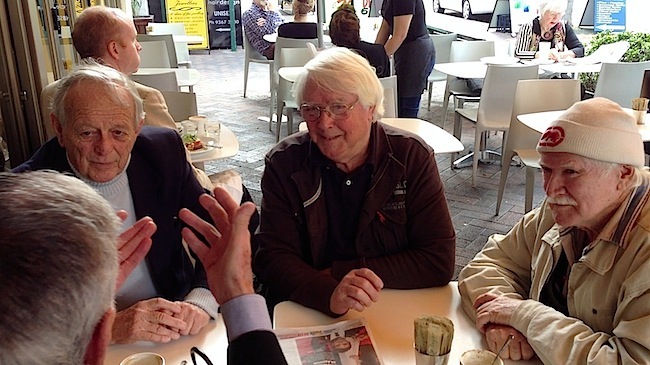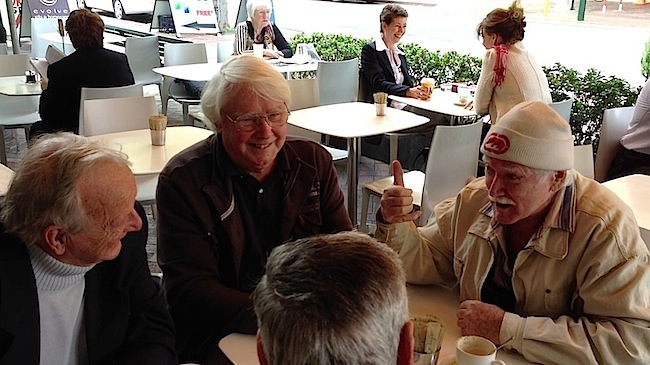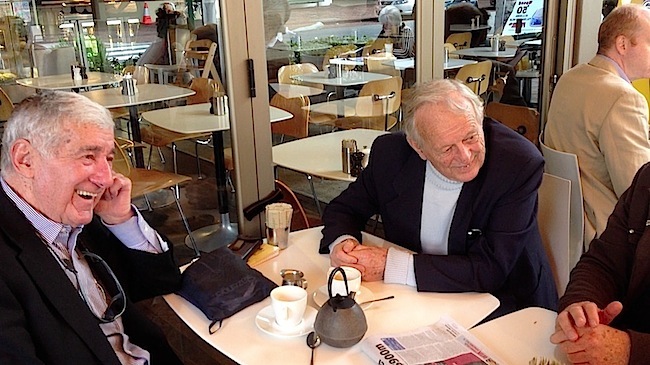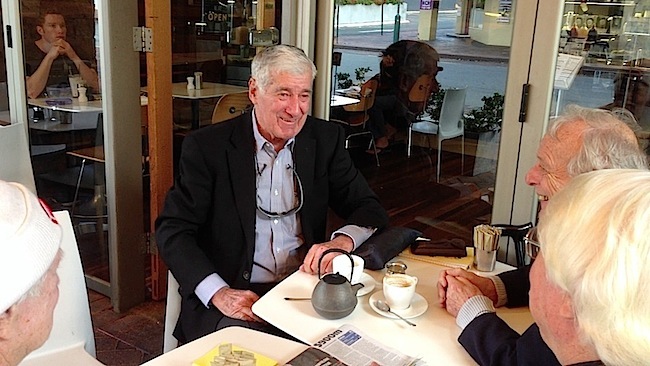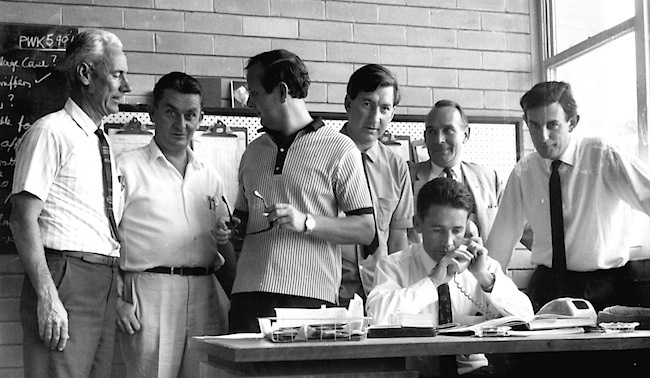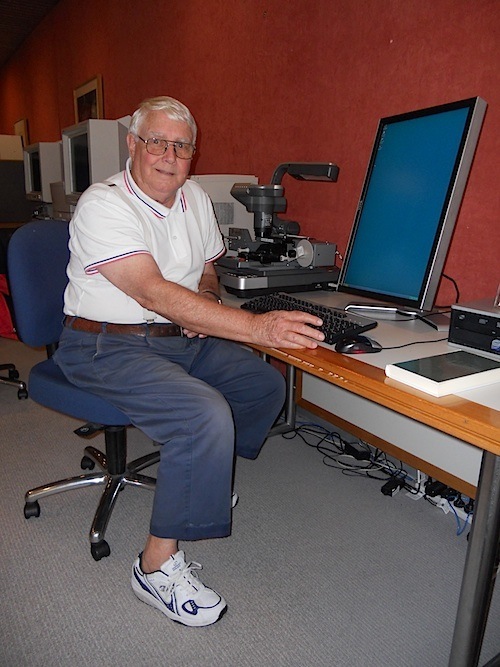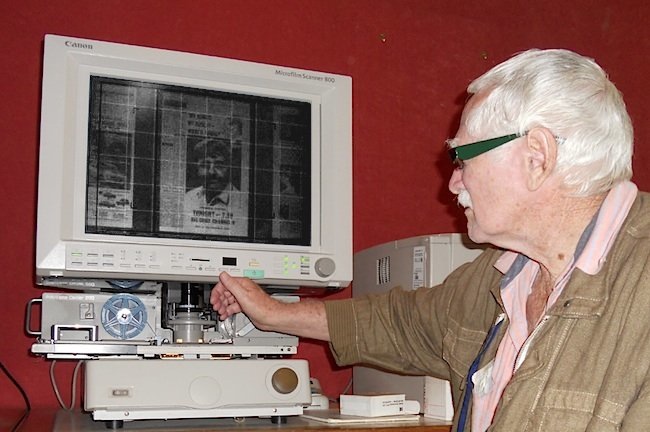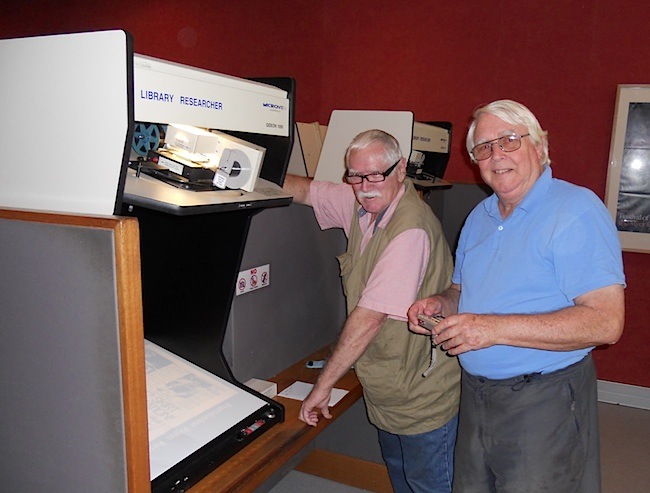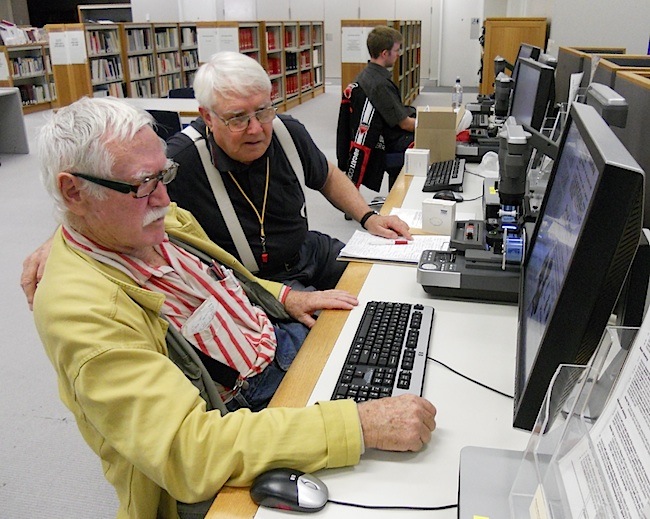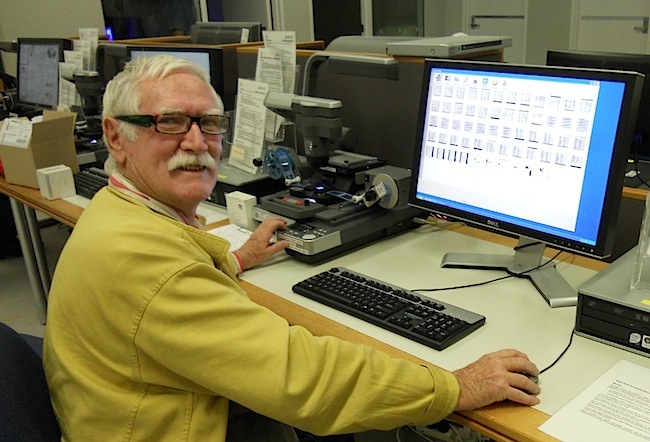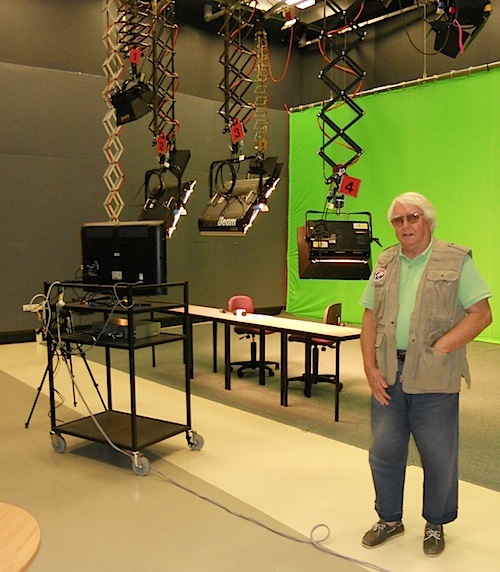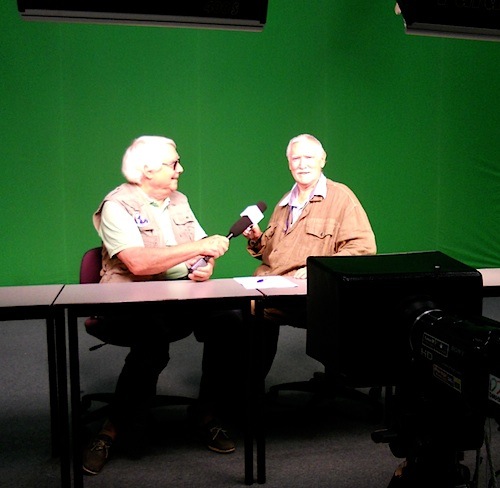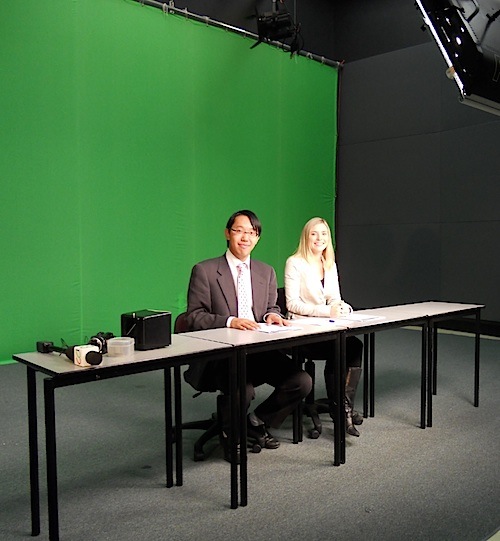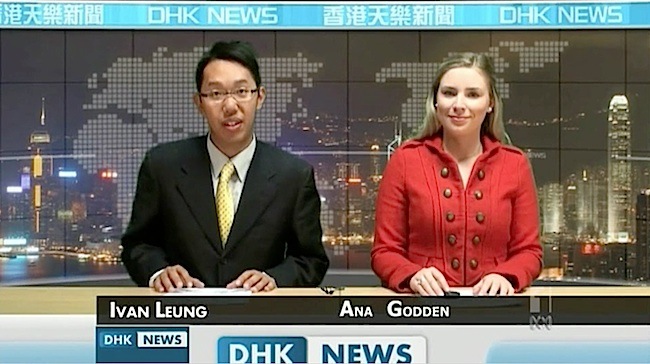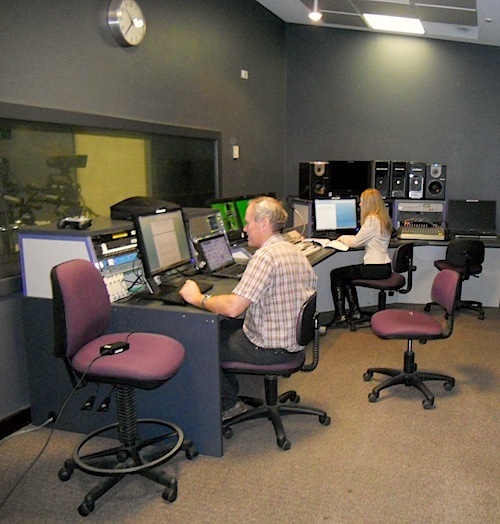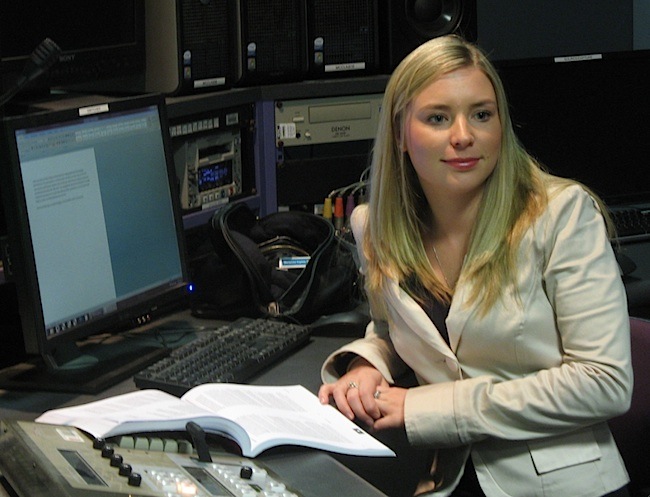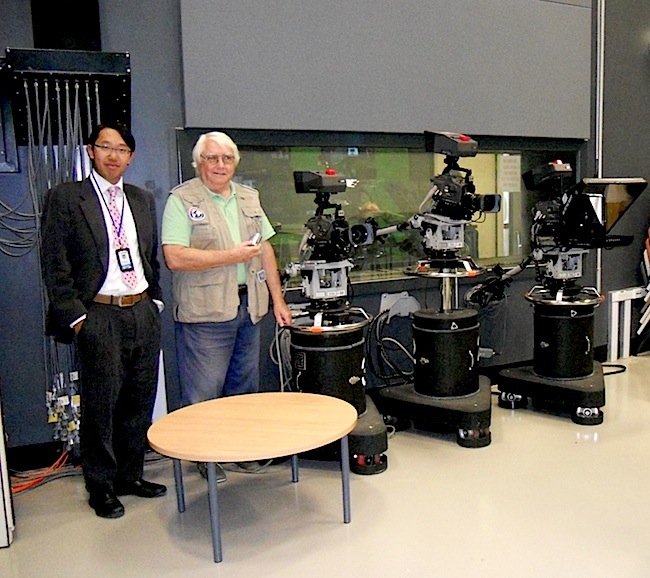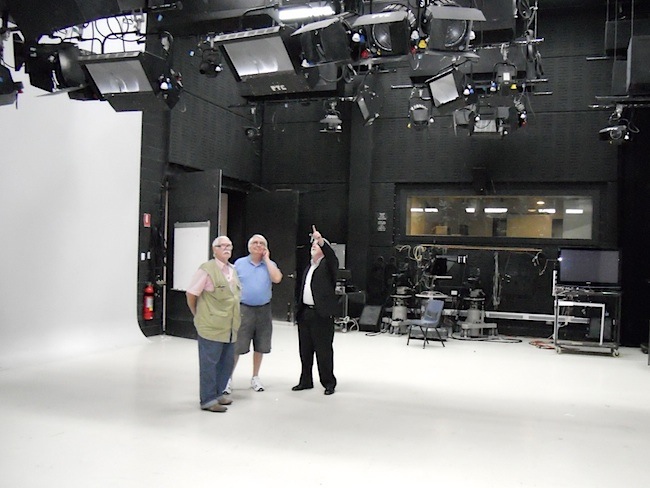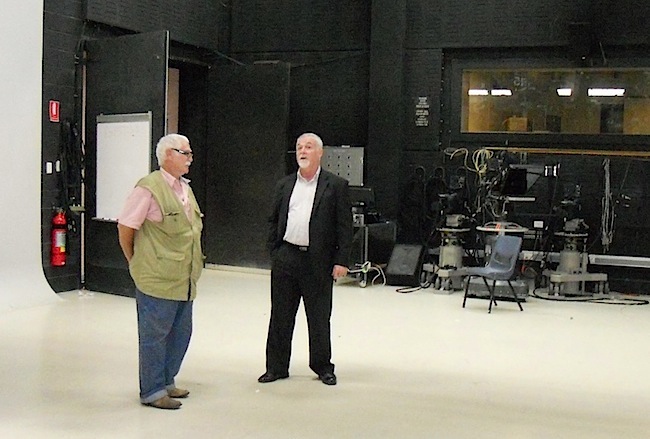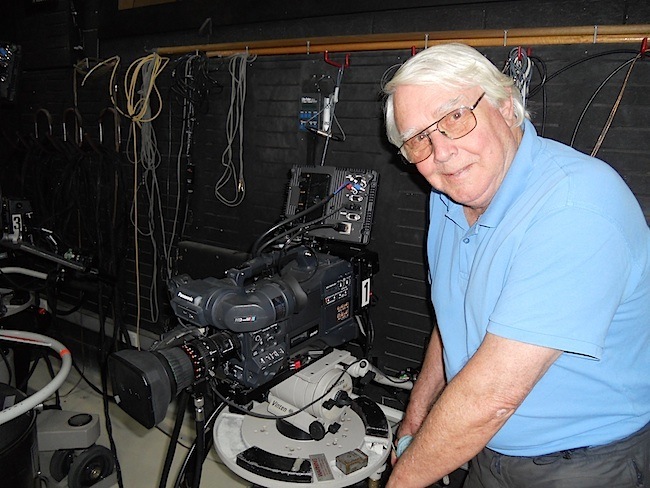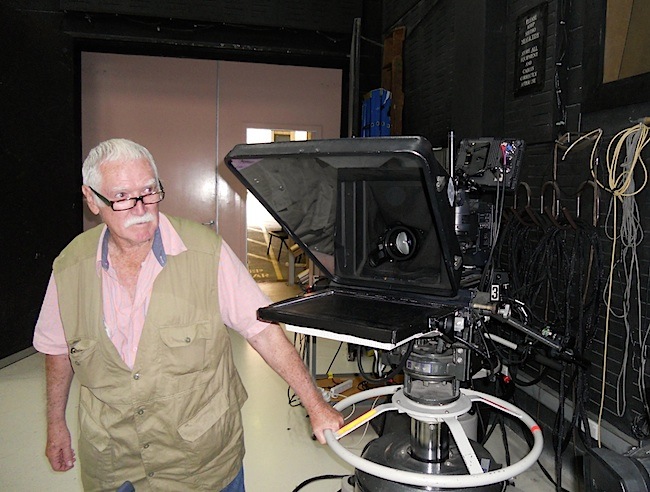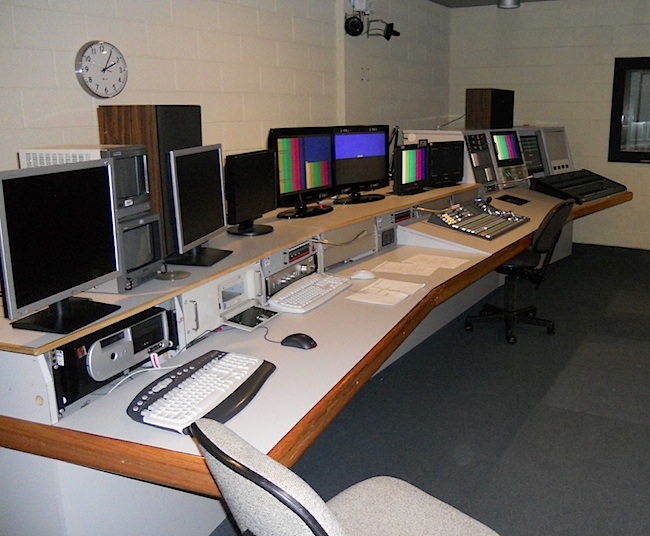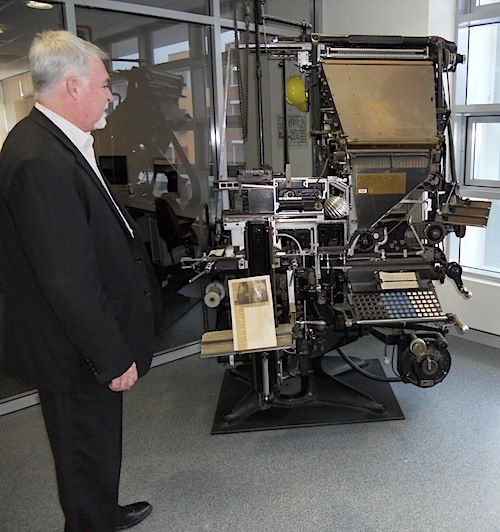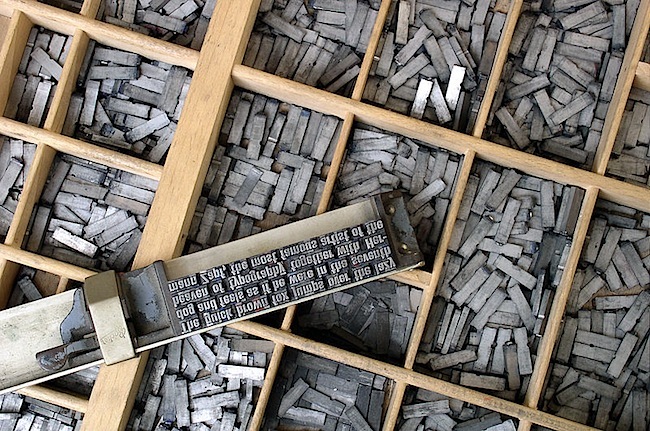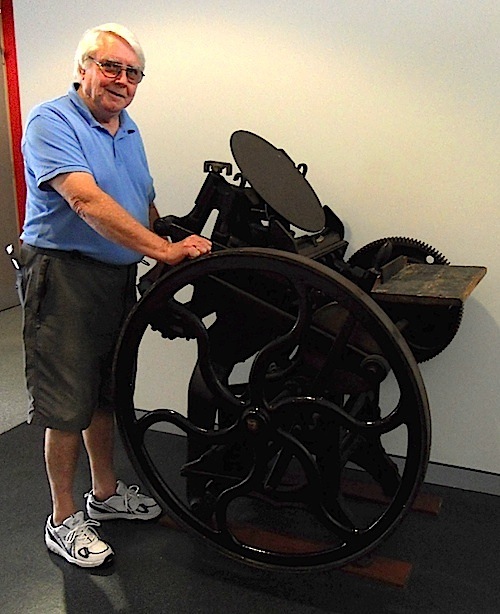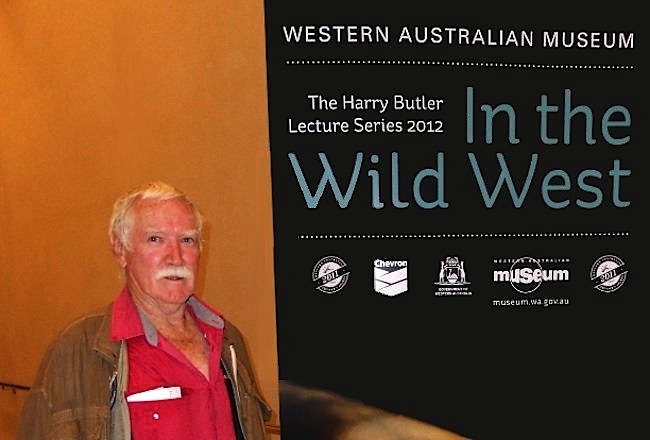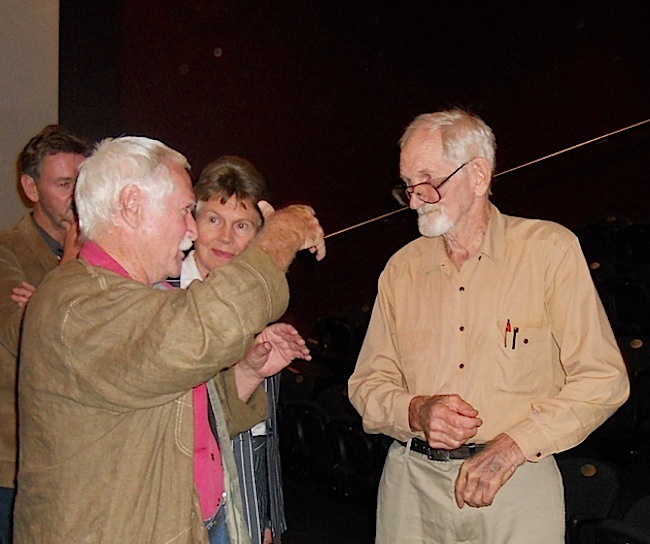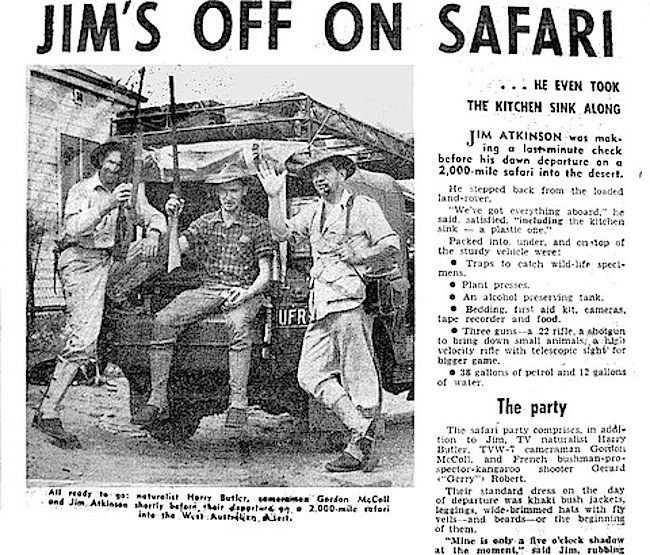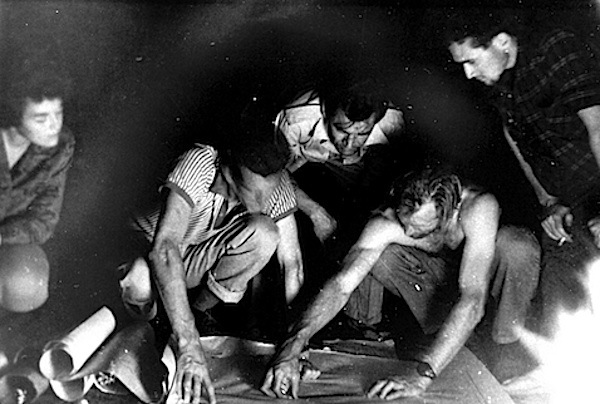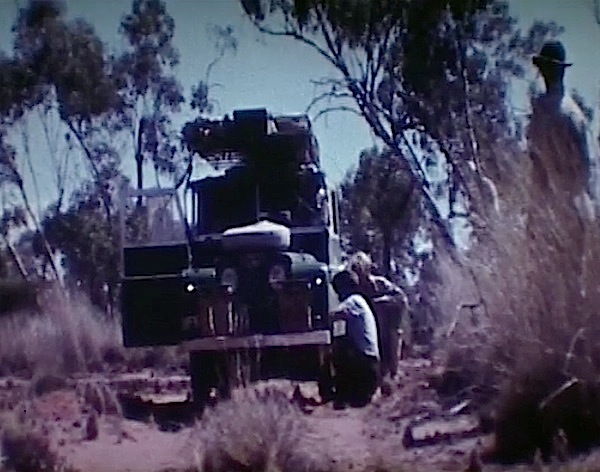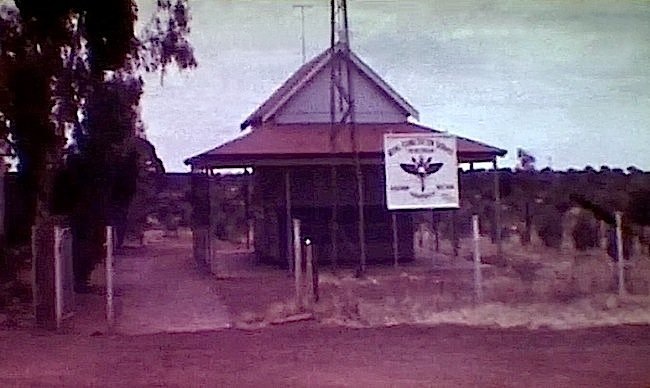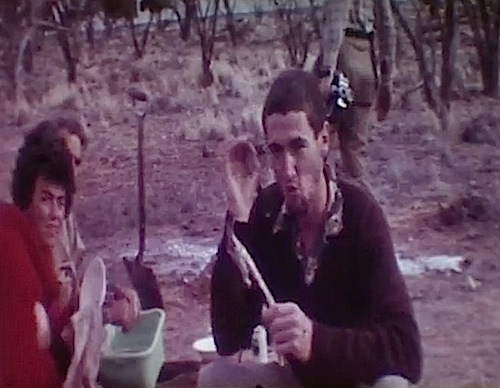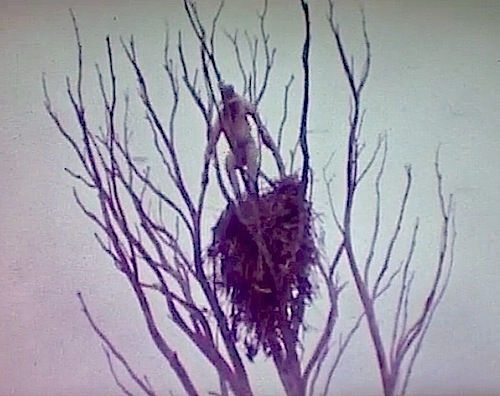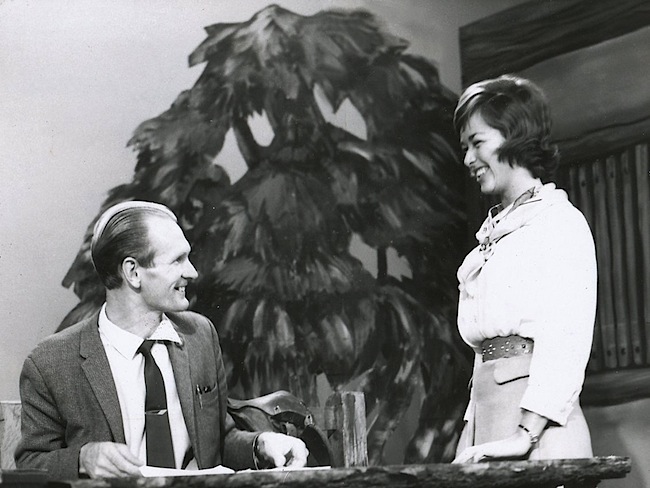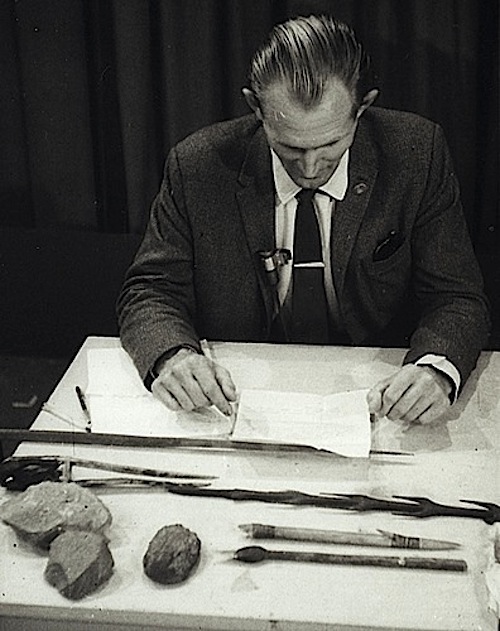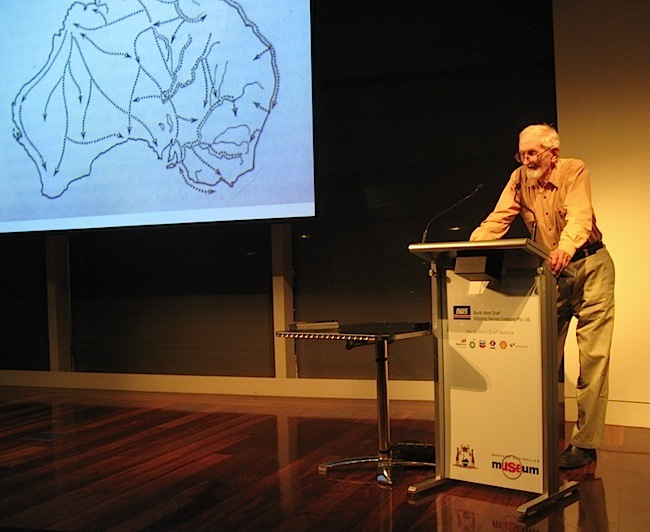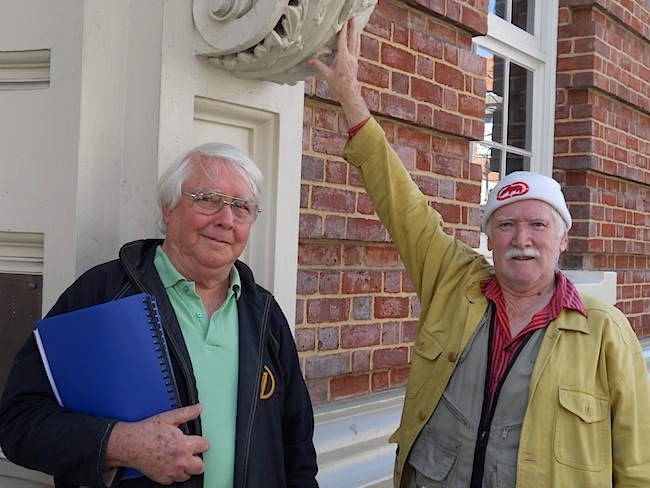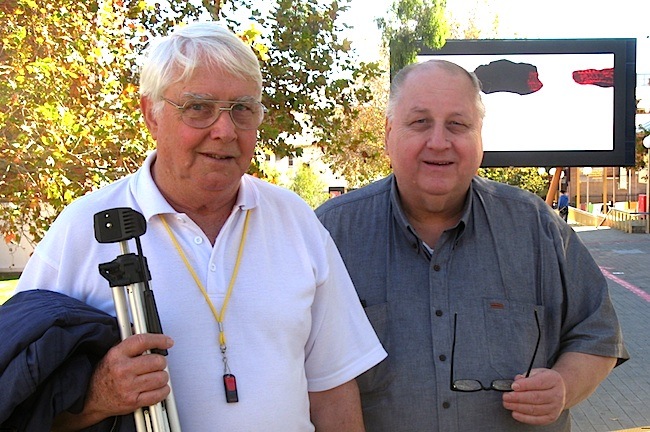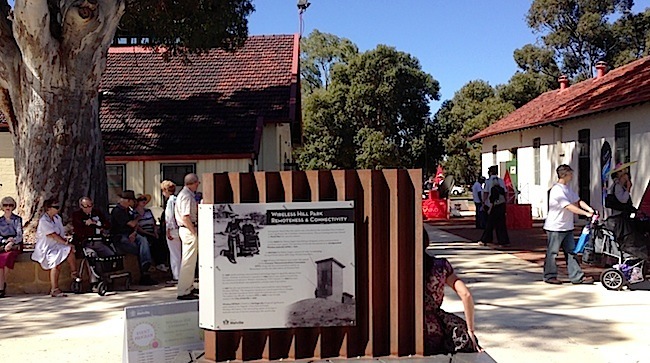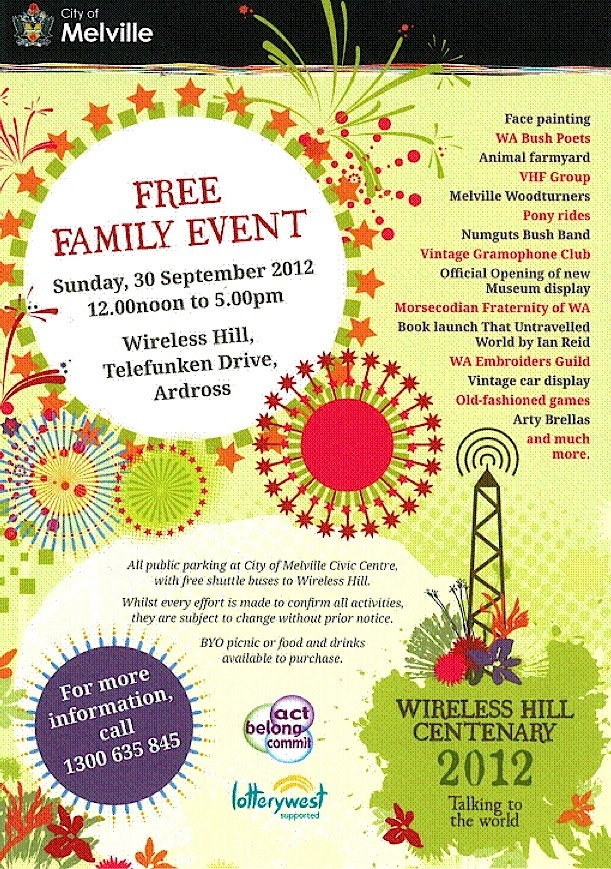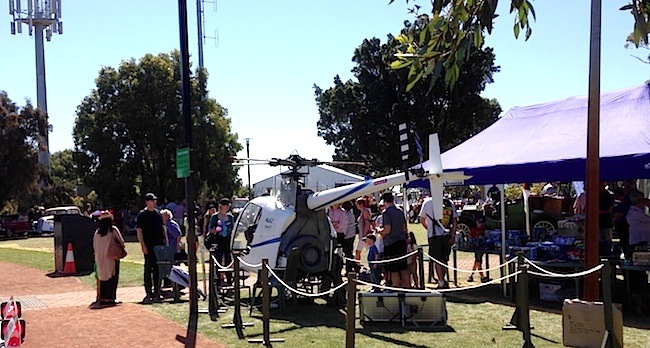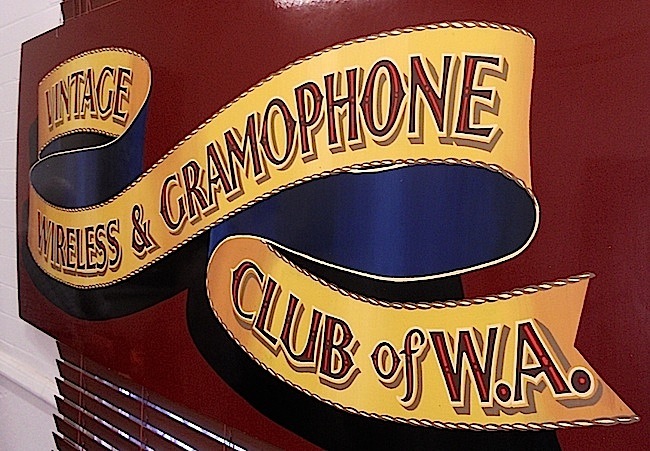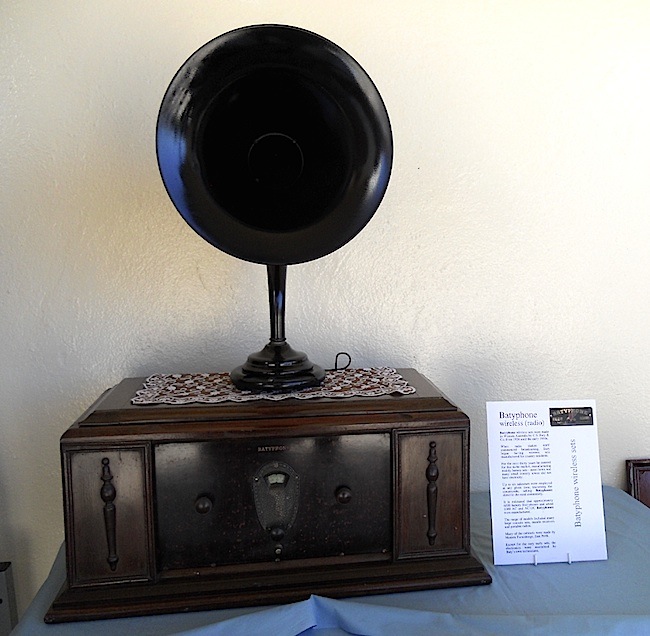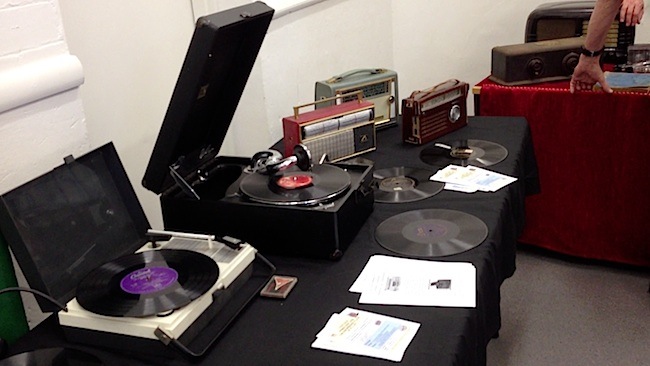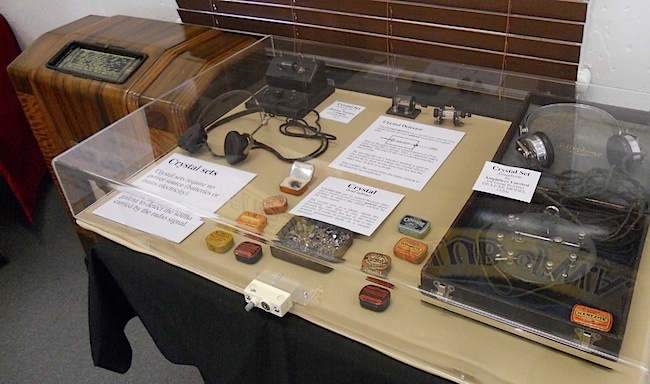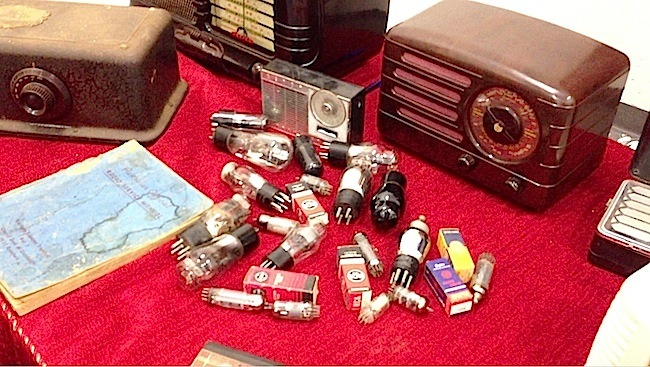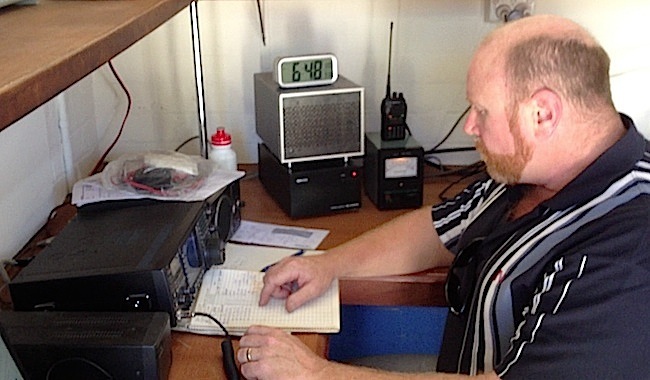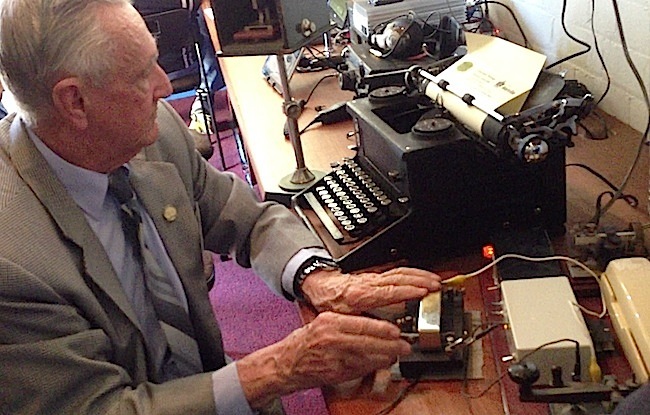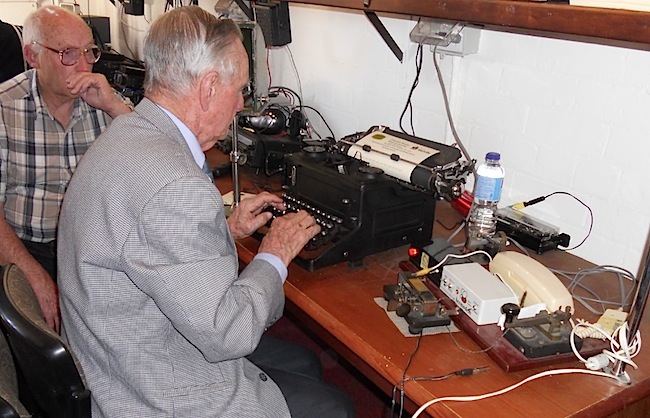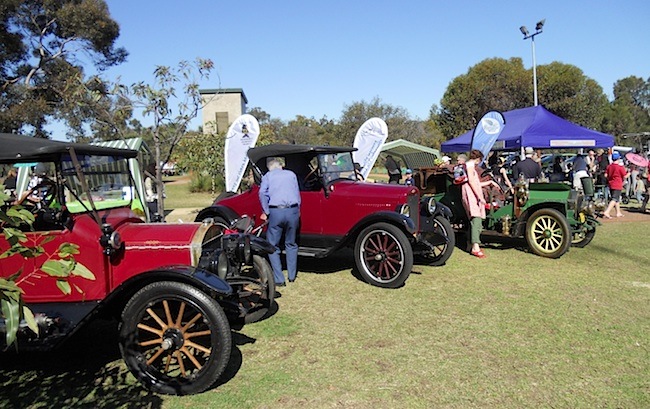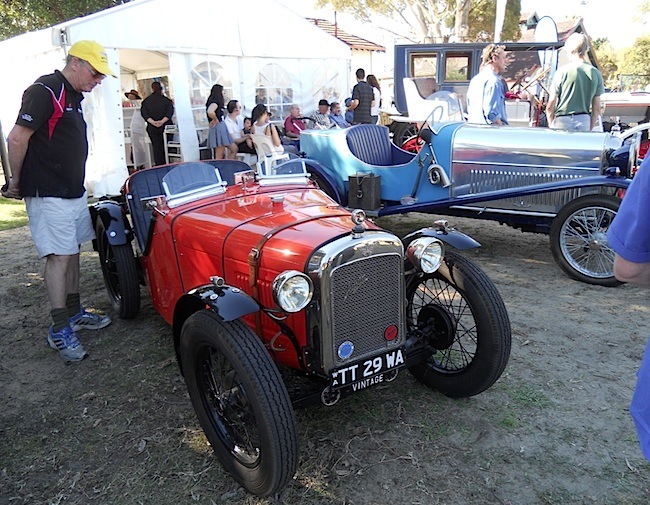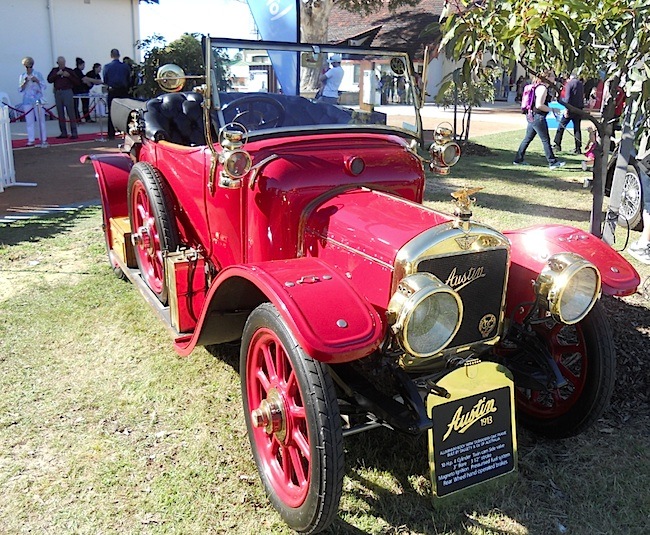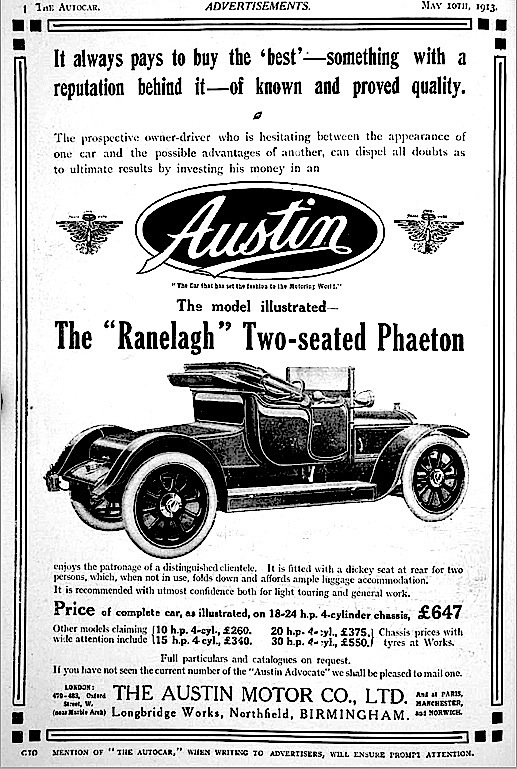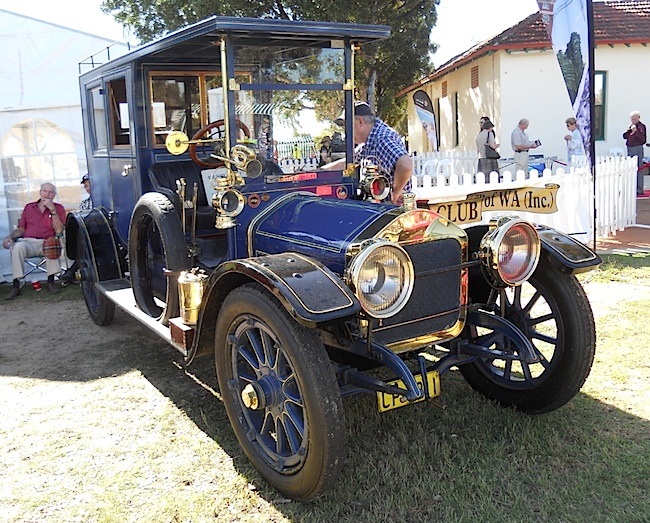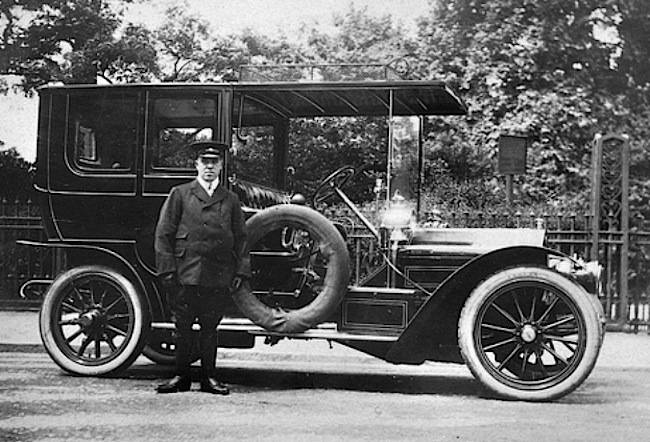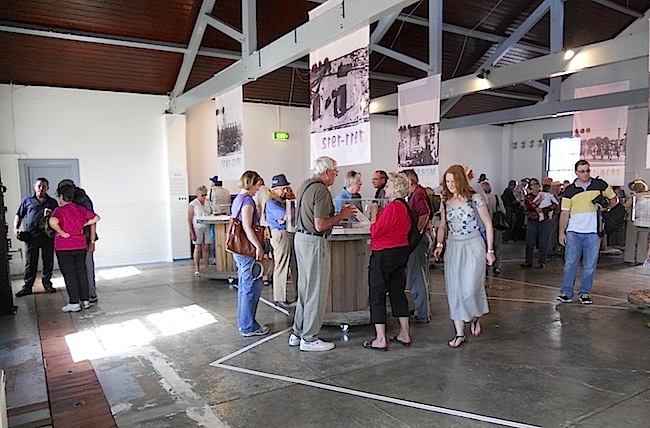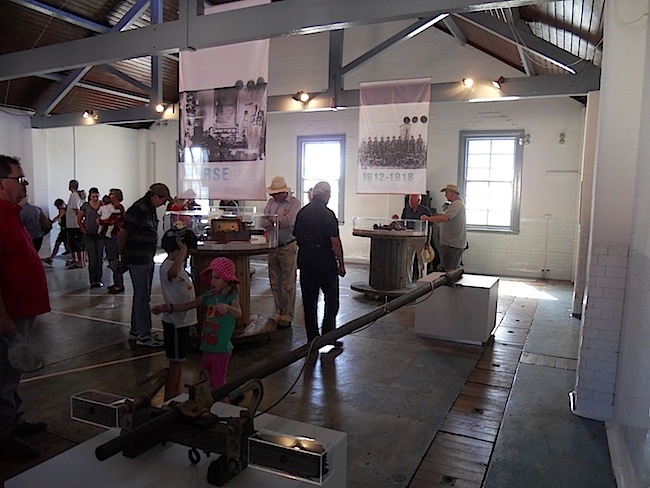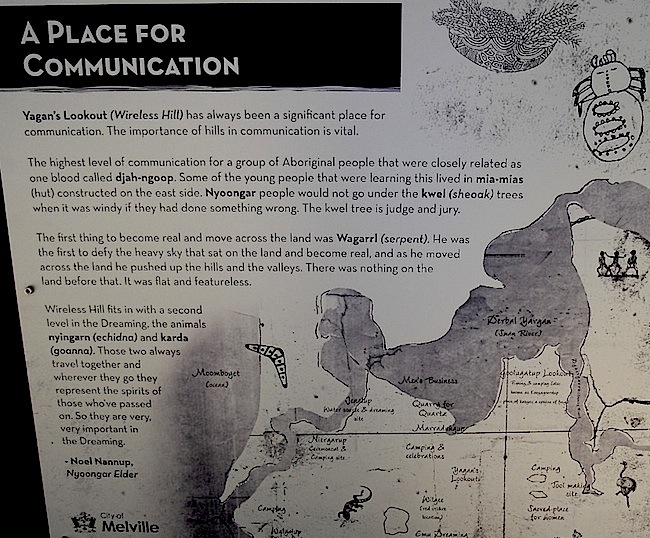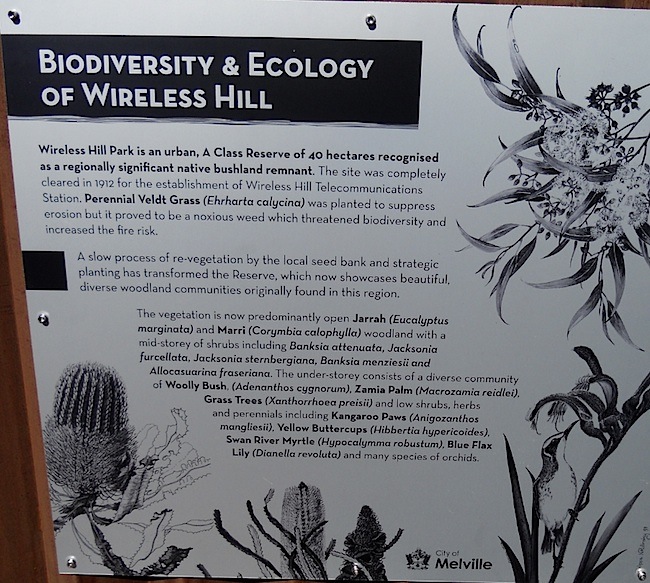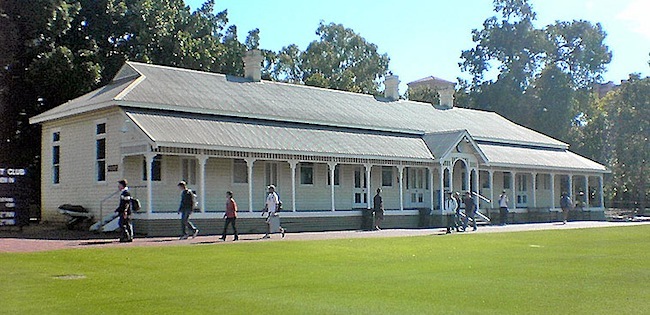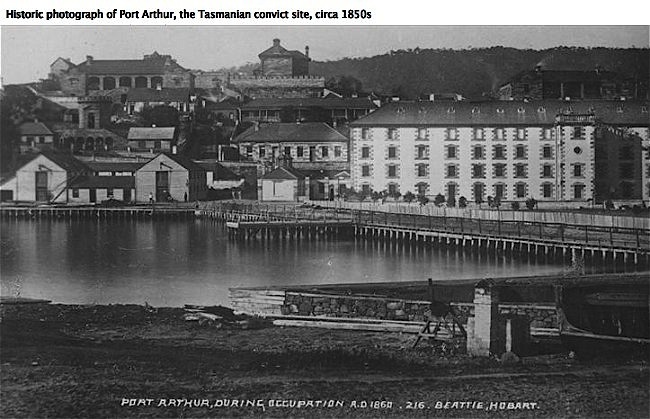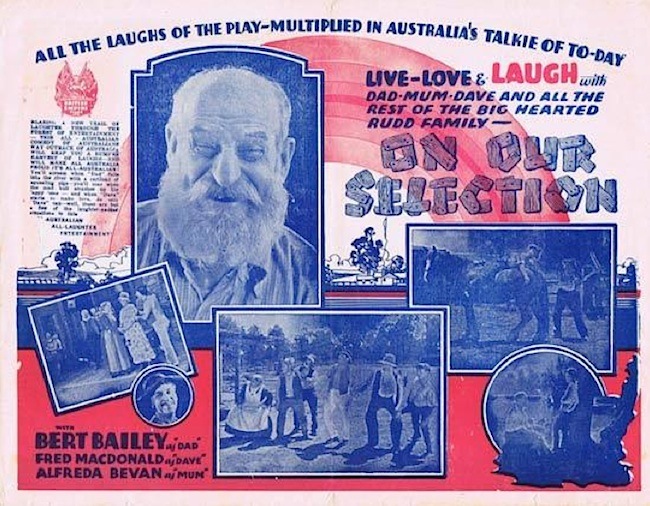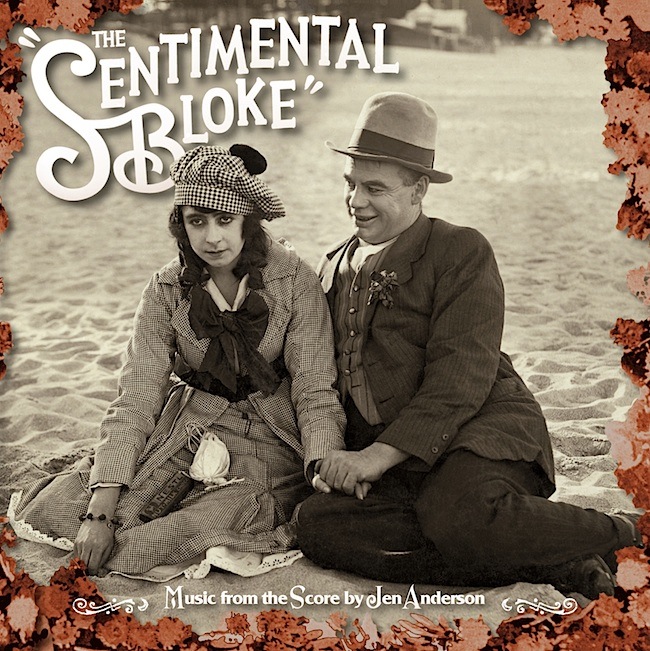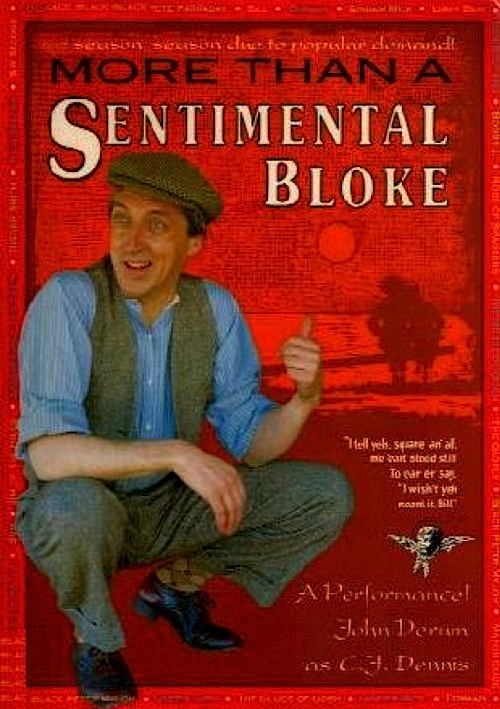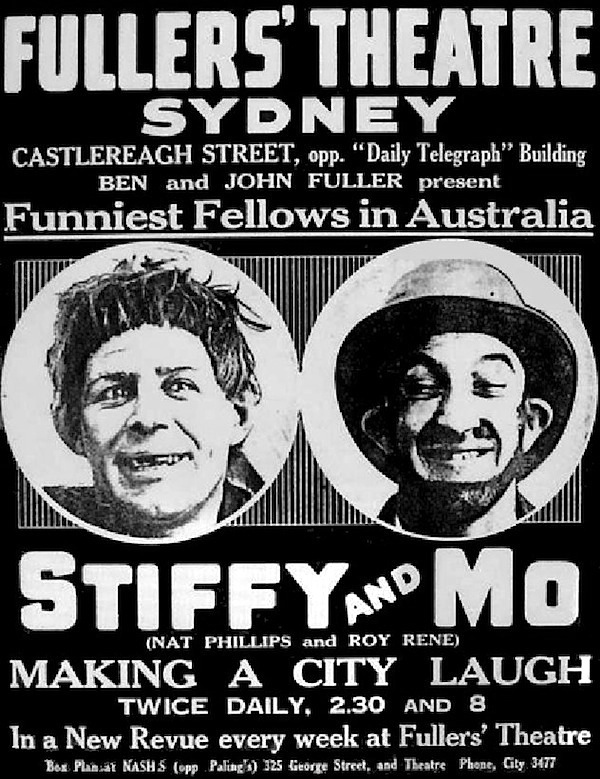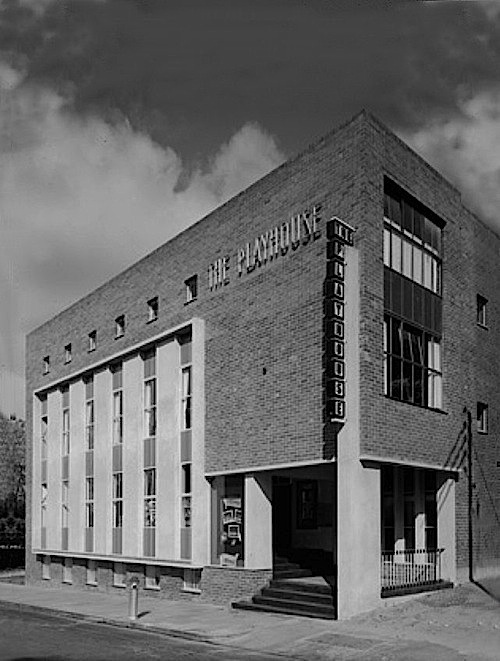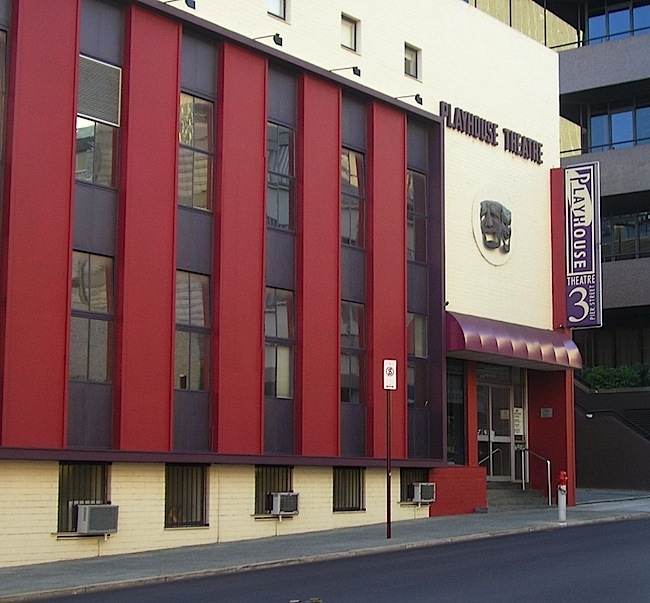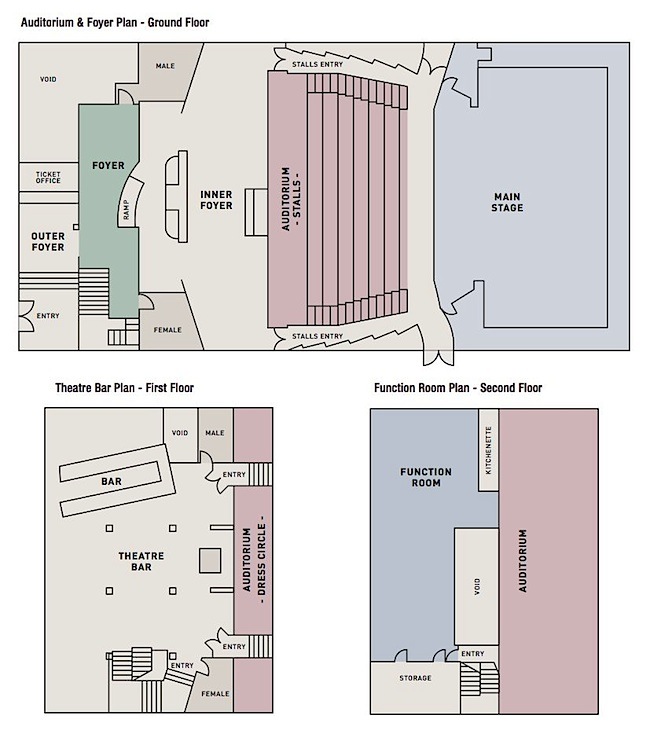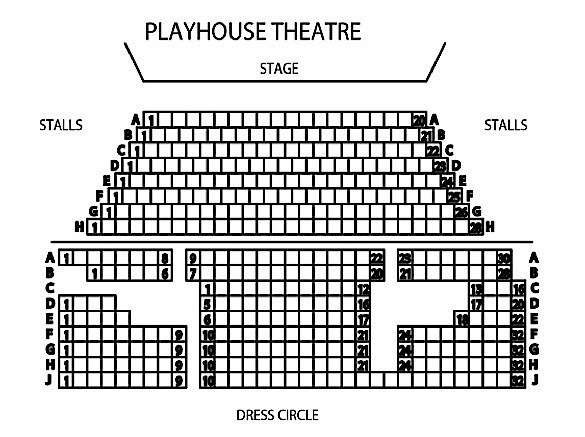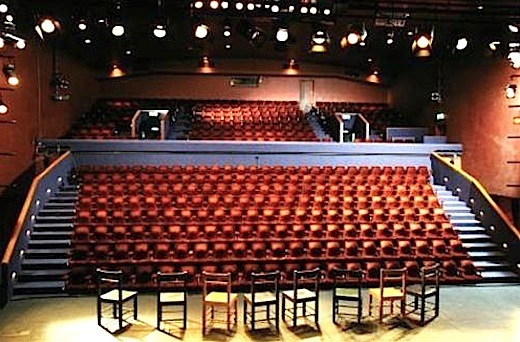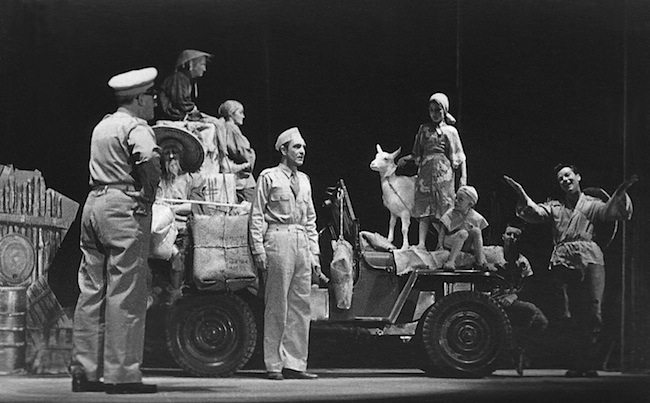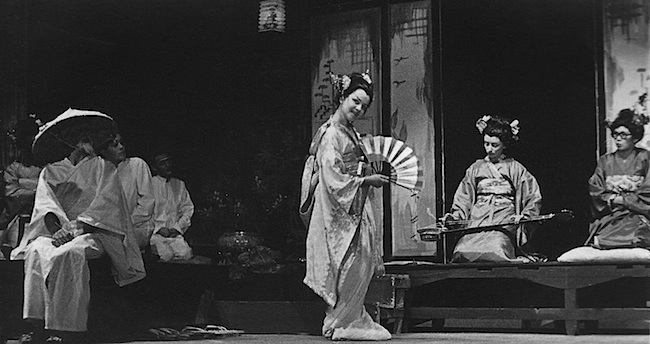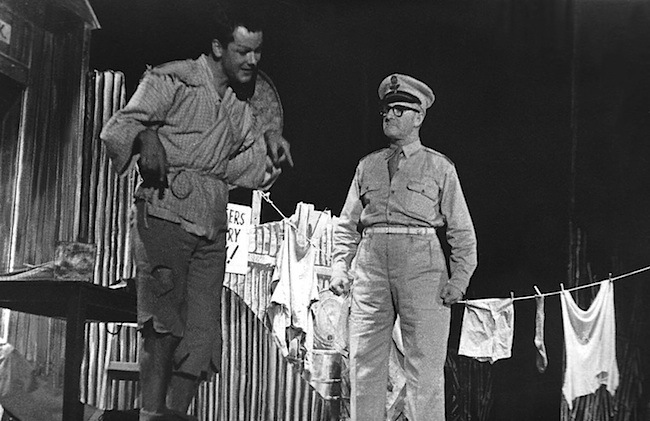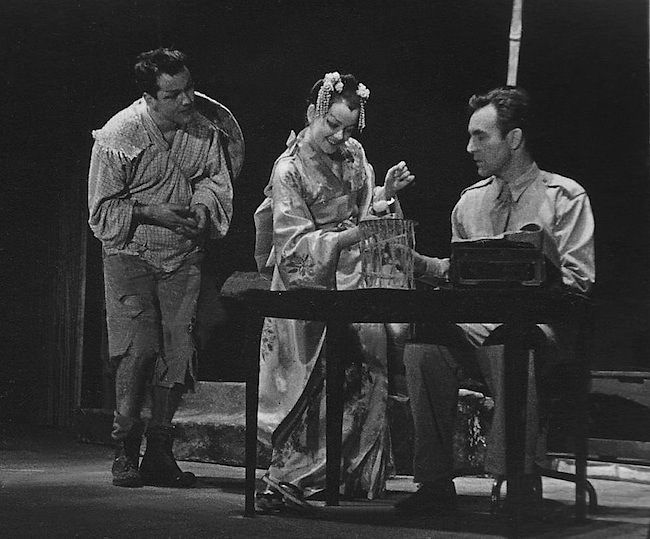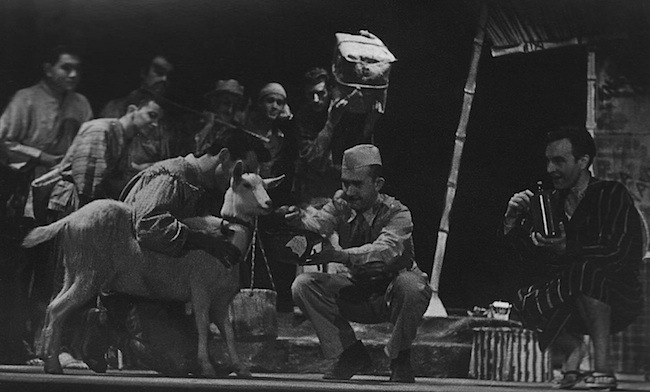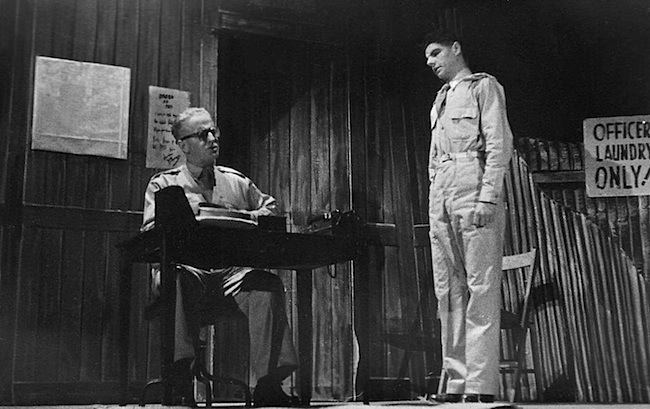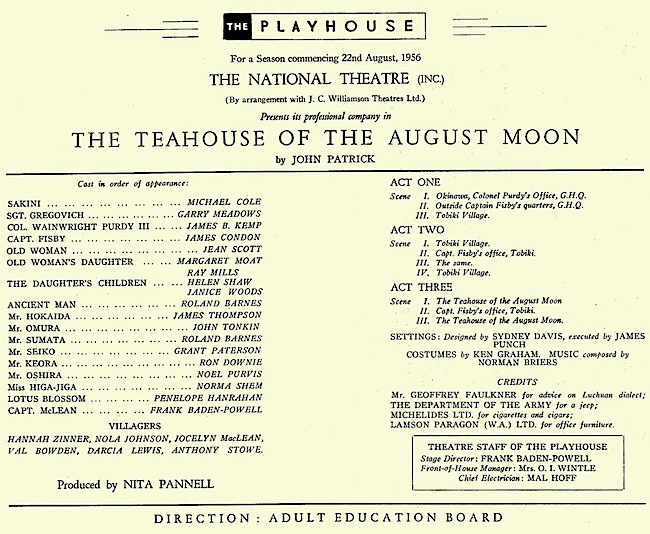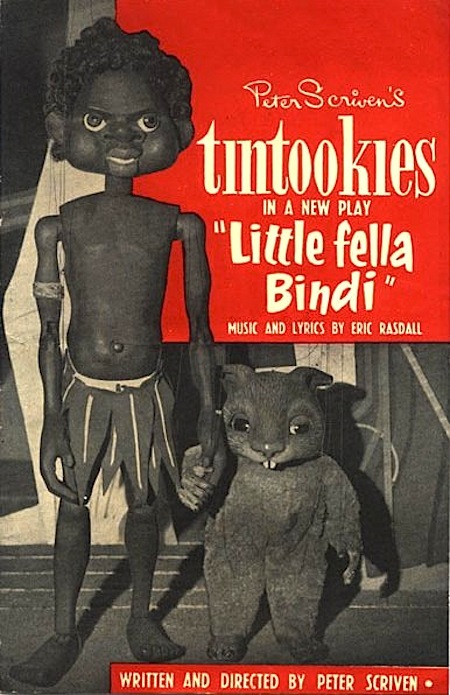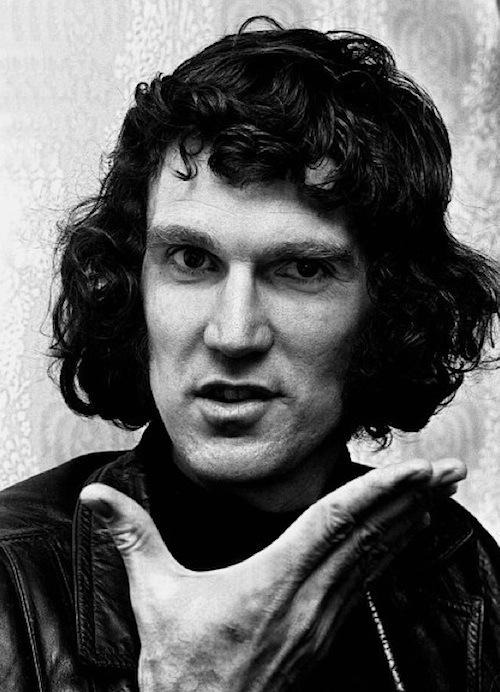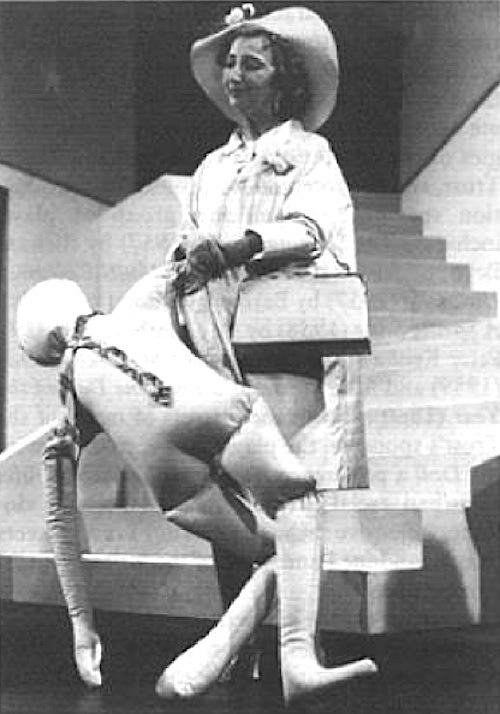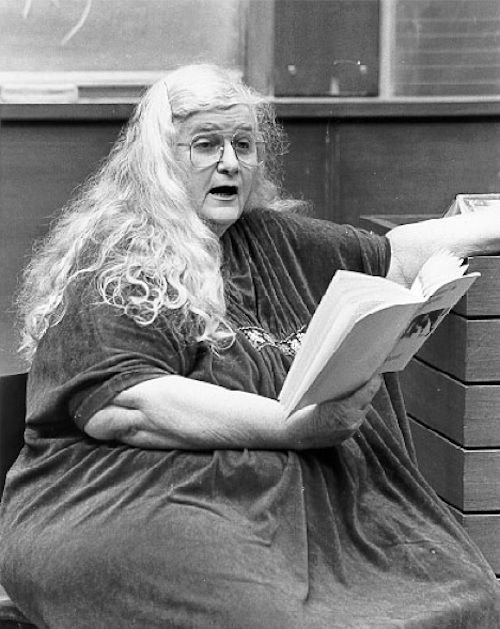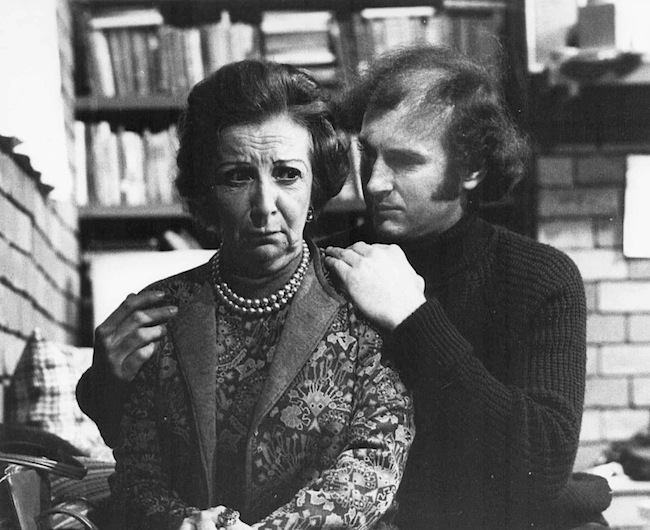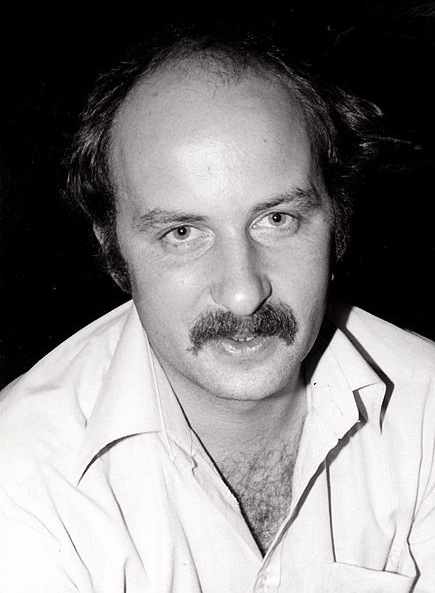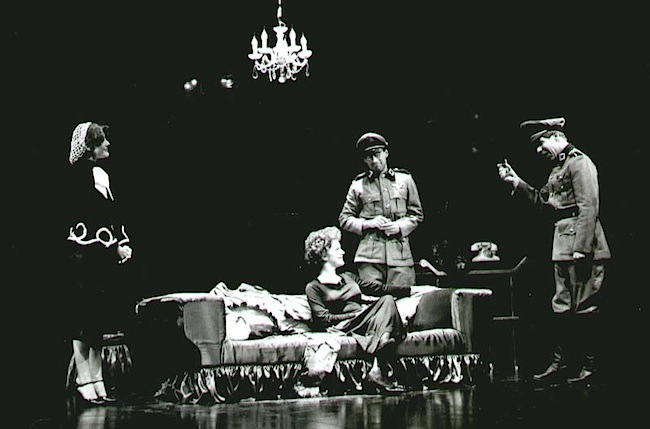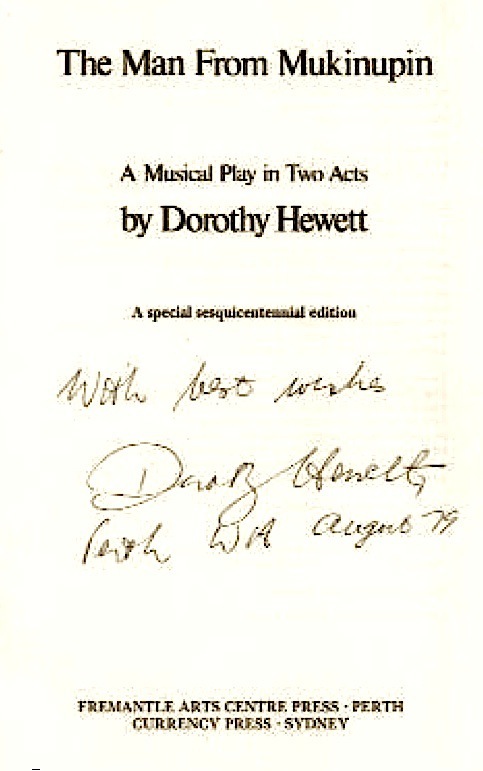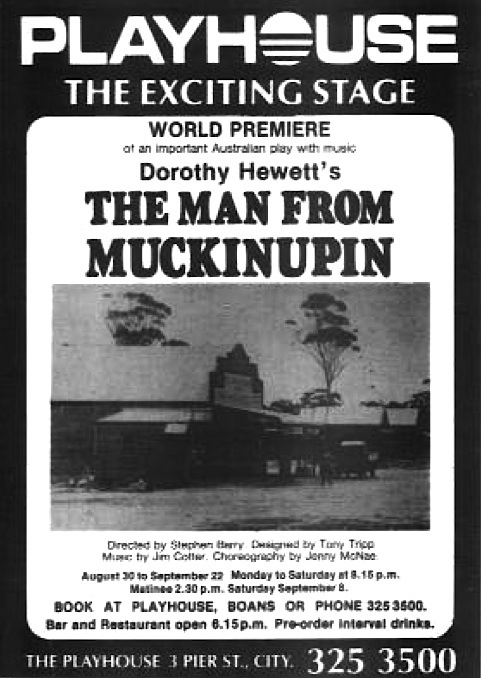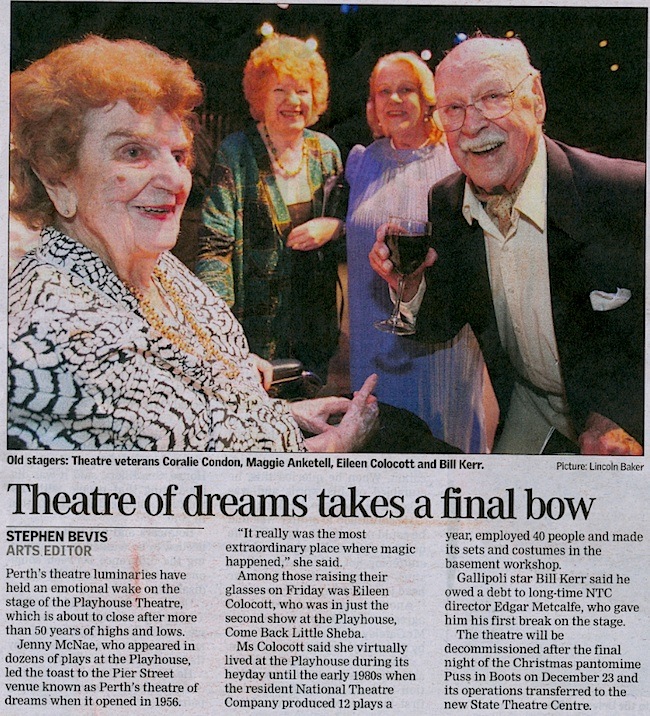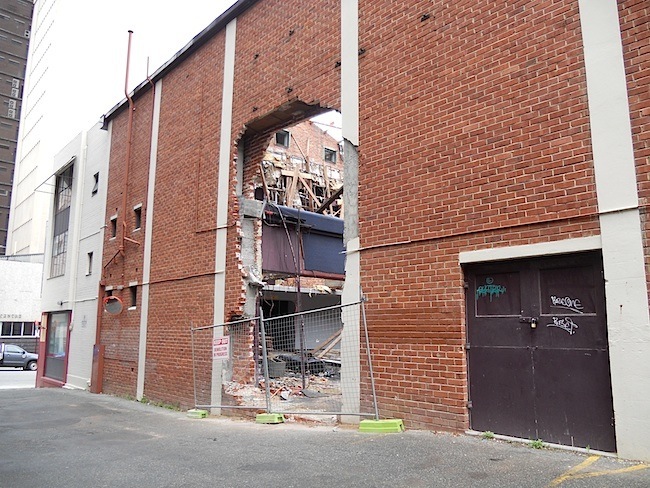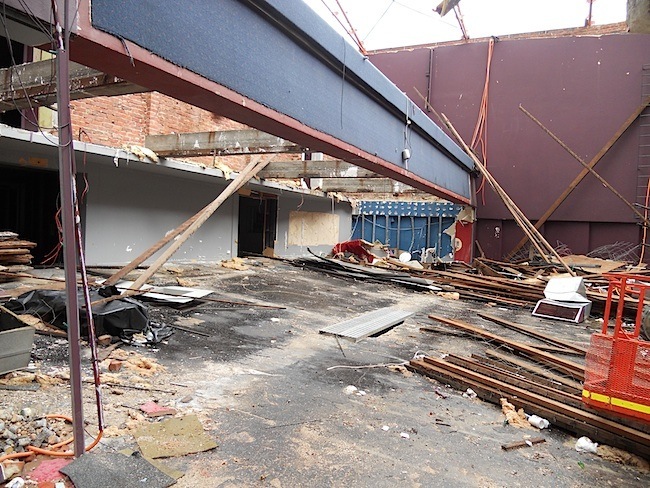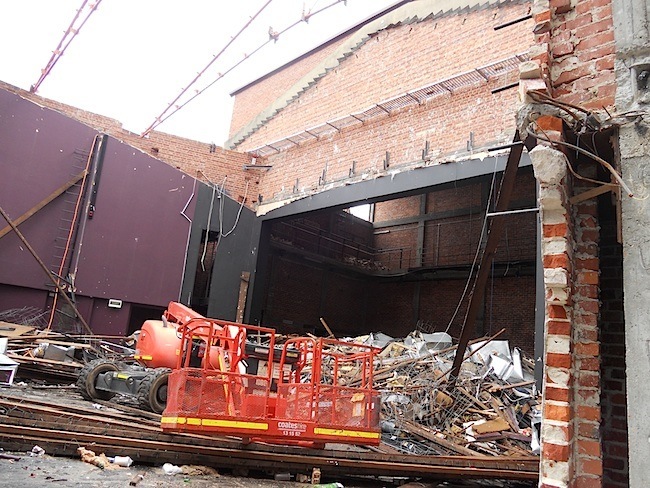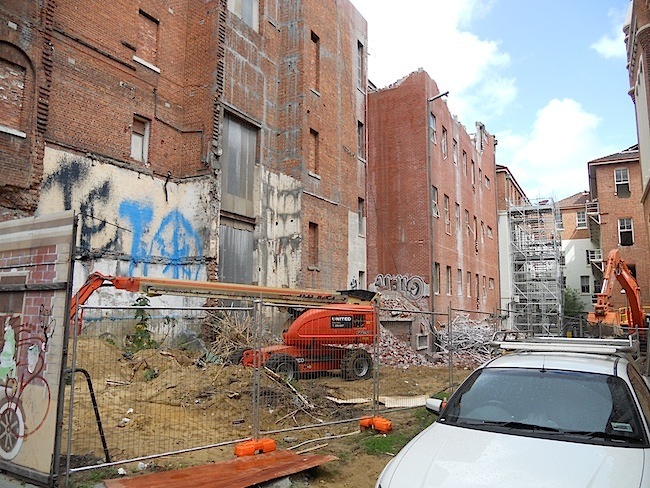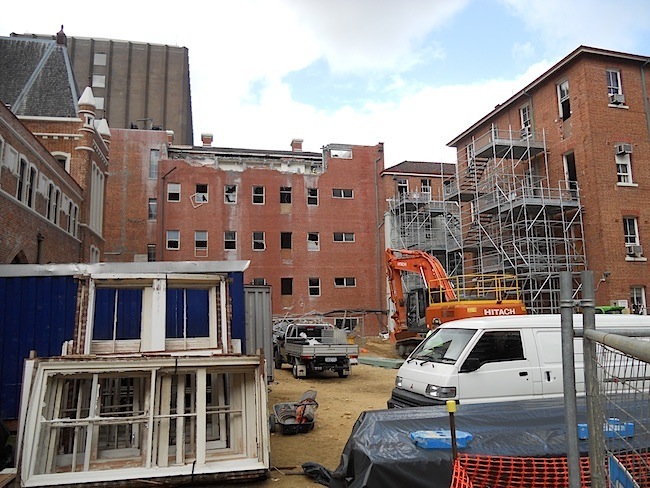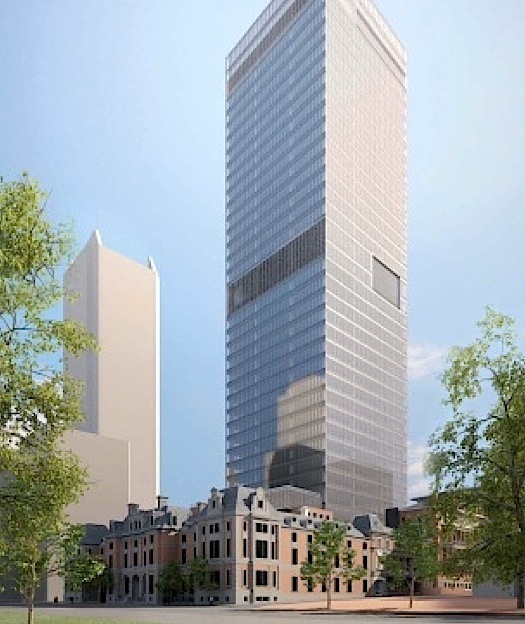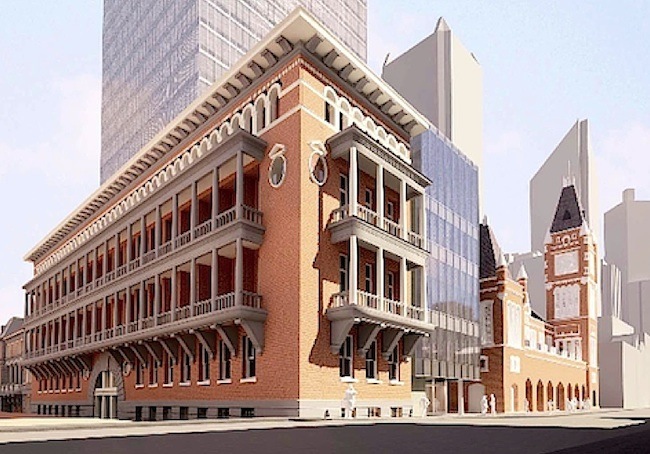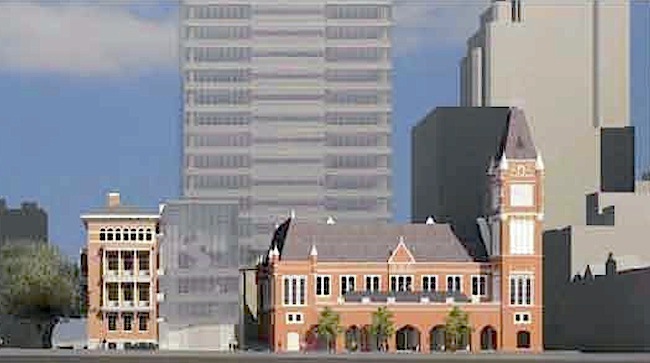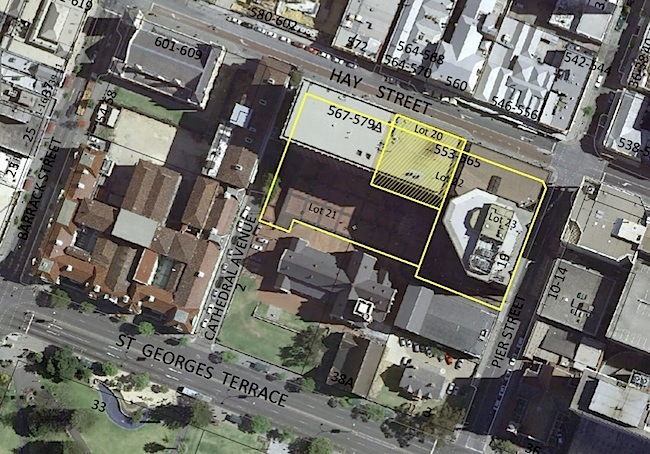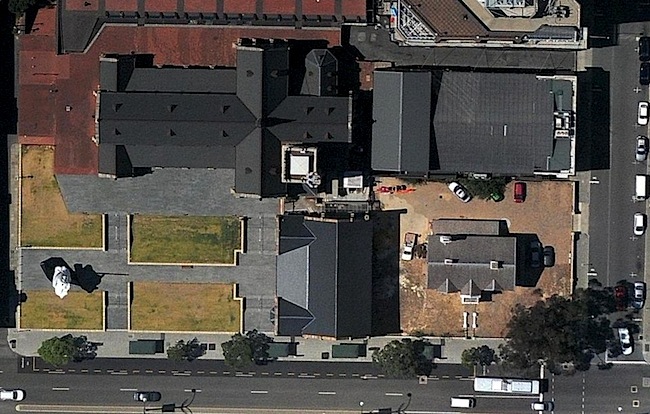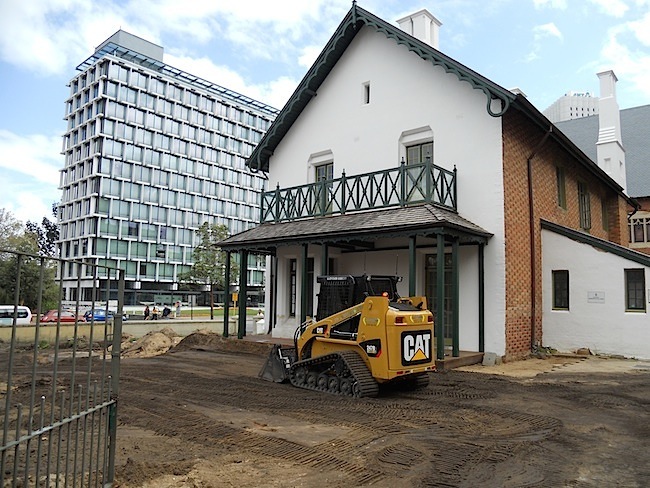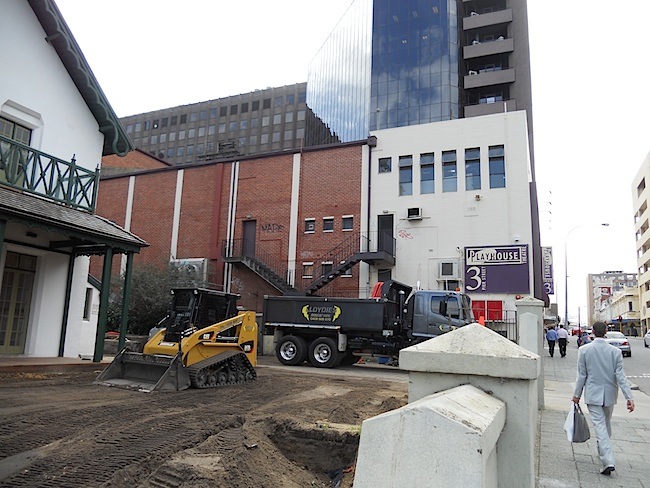The National Theatre Company at the Playhouse (1956 – 1984)
Live entertainment in Perth went well beyond the bounds of the Playhouse Theatre (1956), and its predecessor the Repertory Club (1919), for live theatre was being conducted at many venues in Perth and Fremantle from the earliest years when the Mechanics Institute (1851) on corner of Howick (Hay) and Pier Street, the Perth Town Hall (1870) and St George’s Hall (1879) in Hay Street attracted audiences. Not to mention the many balls, dance venues and cabarets which sprung up. There was Ye Olde Englishe Fayre, an open air venue on the site of His Majesty’s Theatre, the Cremorne Gardens (1897) in Murray Street, the Royal Theatre (1897) in Hay Street, Queen’s Hall (1899) in William Street, and His Majesty’s Theatre (1904) in Hay Street. Then there was the Shaftesbury (1911), the Luxor (1925), the Ritz (1934) and the Tivoli (1940s), all on the same site, but at different times before becoming the Canterbury Court Ballroom. Even the early cinemas ran joint vaudeville and film programs.
A few years after the University of Western Australia opened its doors, the University’s Dramatic Club came into being in 1917 – two years before the Perth Repertory Club was formed in 1919.
Restored heritage listed Irwin Street Building at Nedlands UWA campus
The original UWA campus (1911-1932) was located on Irwin Street in the centre of Perth, and consisted of several buildings situated between Hay Street and St Georges Terrace, where ANZAC House would be opened in 1934 when the ABC leased the RSL’s former home on St George’s Terrace.
Darcy Farrell (the first television news editor in WA) has kindly pointed out that,
“…the old Irwin Street building at UWA was not only home to the pioneer actors but in the past 25 years (at least) has been the HQ for the University Cricket Club and among the stars who have played from that same building include D.K.Lillee and Rod Marsh and the current chairman of Australian selectors, John Inverarity, the former headmaster of Hale School.”
The ‘Company of Four’ was WA’s first professional theatre company of local artists set up after the second world war by Harold Krantz, Sol Sainken, Lily P. Kavanagh and Nita Pannell. John Birman, the Director of Adult Education was also most helpful. The Repertory Club then joined with the Company of Four to become the professional theatre company called the National Theatre, following the move to the Playhouse at 3 Pier Street, Perth, on Wednesday 22 August, 1956, after the site of the former Church of England Deanery tennis court was transformed into a live performance theatre. The Playhouse remained one of the city’s principle venues for performing arts until replaced by the State Theatre Centre of Western Australia in January 2011.
In the early days of Perth theatre, there was very much a British influence, both in plays performed and British actors who had been enticed to our shores. The National Institute of Dramatic Art (NIDA) was not formed until 1958, and hence graduates were not available before 1961. Nor was there a large body of Australian playwrights. Even the ABC drama department preferred the English actors over the Australian, when it came to Radio plays, for an emphasis on cultured English voices on-air would take many years to dissipate within the broadcaster. Not only Australian actors, but the community at large was encouraged to take elocution lessons to emulate those from the mother country.
Though the Western Australian cringe for matters Australian did not mean that local novels and plays were not being written from the earliest days. For the “Term of His Natural Life”, by Marcus Clarke, an Australian novelist and poet, was first published in the Australian Journal between 1870 and 1872 and then made into movies in 1908, 1927 and for television in 1983. Australian Federation in 1901 engendered a heightened sense of nationalism with theatre looking for ways to express our Australian identity.
After the American War of Independence Britain could no longer send her convicts to America, so after 1788 they were transported to the Australian colonies. “For the Term of His Natural Life” is the best known novelisation of life as a convict in early Australian history. The story was based on the penal settlement of Port Arthur, Tasmania.
In 1912, Dad and Dave “On Our Selection”, looked at the trials, tribulations and comic events surrounding the battlers in the bush seeking to live off the land. So popular was Steele Rudd’s play that it continued life on radio and in film.
Dad and Dad in On Our Selection (1932) Directed by Ken G. Hall
“The Sentimental Bloke”, based on the 1915 poem entitled Songs of a Sentimental Bloke by C.J. Dennis, was published in book form the same year and sold over 60,000 copies in nine editions within twelve month, to then became an Australian silent film in 1919, which also proved a great success, followed by a stage version in 1922.
Arthur Tauchert (Bill the Bloke) and Lottie Lyell (Doreen) in the 1919 silent film
In 1961, a musical called The Sentimental Bloke was produced in Canberra, and later in Melbourne and other cities. In May 1981, the Playhouse presented “More Than A Sentimental Bloke” which was devised by John Derum (an Aunty Jack sidekick in the ABC TV series), who also portrayed the author in this stage show about the life and work of C.J. Dennis.
John Derum portrayed C.J. Dennis in the stage show about his life and work
During the constraints of World War I, the Australian stage depended more on our own, with fewer actors and travelling troupes being imported. This needed and gave added opportunities to local performers such as Stiffy and Mo (Nat Phillips and Roy Rene), who starred in the highly successful Australian pantomime, The Bunyip (1916). Roy Rene’s bawdy character Mo McCackie, was one of the most well-known and successful Australian comedic acts of not only vaudeville, but also radio and film.
Stiffy and Mo (Nat Phillips and Roy Rene)
Before there was radio in Western Australia in 1924 and television in 1959, and other than theatre and film, our sense of national identity was conveyed more in print. One widespread publication was Smith’s Weekly, a patriotic newspaper-style Australian magazine published from 1919 to 1950, and read all over the country. It contributed greatly to a sense of being Australian, and as well as publishing sport and finance, it delved into the sensational, the controversies and satire. It was also an outlet for short stories and cartoons, whilst nurturing not only local artists and writers, but good journalism.
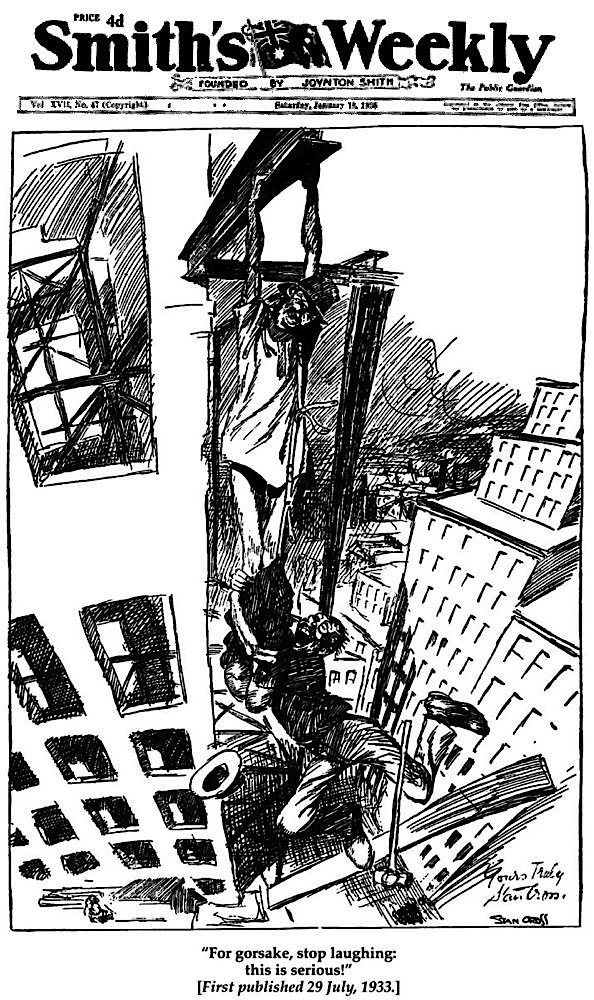
The Festival of Perth was established in 1953 and The Australian Elizabethan Theatre Trust was founded in the following year. Since then, the three-week long Festival has been held in February of each year, to offers some of the world’s best theatre, music, film, visual arts, street arts, literature and free community events. Meanwhile, the Trust was set up to commemorate the 1954 visit to Australia of Her Majesty the Queen and His Royal Highness the Duke of Edinburgh. Though Shakespeare is quintessentially English classic theatre, the aim of the Trust was to provide a theatre of Australians by Australians for Australians. Experimental seasons of home-grown opera, ballet and drama were presented in each of the States. The Trust offered guarantees against loss to local repertory companies prepared to try out new Australian plays. A successful achievement was the discovery of Ray Lawler’s Australian play, Summer of the Seventeenth Doll, which won a national play competition run by the Playwrights Advisory Board in 1955 and was the play that kick-started a spate of Australian drama.
The National Theatre Company at the Playhouse evolved from the amateur Perth Repertory Club and Perth’s first professional theatre company of local artists, The Company of Four, which consisted of the architect Harold Krantz (who designed the Playhouse and supervised construction), Sol Sainken (a producer who was also an Optician with a shop in Hay Street), Lily P. Kavanagh (a distinguished actress who taught speech and drama) and Nita Pannell (writer, actress and producer).
Dedicated in commemoration of those who fell in the Second World War, the Playhouse at 3 Pier Street, Perth, opened on Wednesday 22 August, 1956, after the site of the former Church of England Deanery tennis court was transformed into a live performance theatre.
Over the life of the National Theatre Company (1956-1984) there were many artistic directors, the most prominent being Edgar Metcalfe who took up this role on three separate occasions. A de-facto in this role from the start was Frank Baden-Powell (Stage Director 1956-1959) until Douglas Caddy was officially appointed Artistic Director in 1959, but he died within a month. The artistic directors thereafter were in order – Raymond Westwell (1960-1962), Edgar Metcalfe (1963-1967), Allen Harvey (1967), Barry J. Gordon (1968-1970), Edgar Metcalfe (1970-1972), Aarne Neeme (1973-1977), Stephen Barry (1978-1981) and finally Edgar Metcalfe (1982-1984).
When first built, the Playhouse could seat 700 people and had a basement which accommodated a wardrobe and property storage area, a carpenter’s workshop and a painting bay. There were extensive renovations made to the theatre in 1982, with a reduction of seating capacity to 427 people on two main levels (189 in stalls and 238 in the dress circle).
The second electrician on the opening night, Ian Stimson, explains the following:
A dance studio was located under the foyer in the basement running the width, entered via the Deanery side of the building. The under-stage area was used as a carpentry and set painting area, with a long trapdoor in the off-stage floor on the northern side of the building running front to back of the stage. Most props were delivered in cane shipping baskets, to the north side rear of the theatre and lifted through a double height twin door, and lowering downstairs through the trapdoor.
There were male and female change rooms with makeup, storerooms and costume rooms down below in the basement, located under the stage on the southern side. The ceiling under the stage was higher than the rest of the basement, though the ceiling was also high under the foyer. Then as the theatre floor above was ramped, the basement height varied from about 8 feet down to about 6 feet near the orchestra pit, of which half was under the stage and half in front of the stage.
The original manual lights dimmer plant was located inside a window on the north wall, on a platform above the prompt corner.
The first floor bar area was originally a restaurant, until the bar was licensed. The second floor was where a rehearsal and board room was located, then later to be used as the Green Room, and more recently as a function room. A cinema bio box (projection room) was built, though this was used later as a lighting control with modern dimmers and the follow spot area.
Provision was made for locating television cameras near the stage, for TV was introduced in 1956 to the east coast. This feature was not taken advantage of and was removed at a later date.
Actor Ron Graham, formally of the Royal Navy, had no fear of heights and was responsible for fitting all the stage blocks, with pulleys and associated ropes for flying items above the stage. He also spliced the ropes. Each block sat in a channel that enabled them to be repositioned. A stage hand balcony or fly floor circled the stage from where lighting and fly-men could work. Behind the balcony was railing to anchor ropes to.
The theatrical fare presented included the works by Sir Noel Coward (1899-1973) an English playwright, composer, director, actor and singer – George Bernard Shaw (1856-1950) an Irish playwright, novelist, music and literary critic and accomplished orator – Henrik Ibsen (1828-1906) a Norwegian playwright, director and poet – Terrence Rattigan (1911-1977) one of England’s most popular 20th-century dramatists – Cole Porter (1891-1964) an American composer and songwriter who was drawn towards musical theatre – George Gershwin (1898-1937 an American composer and pianist and his brother Ira Gershwin (1896-1983) an American lyricist – Thornton Wilder (1897-1975) an American Pulitzer Prize winning playwright and novelist – Jean Cocteau (1889-1963) a French novelist, dramatist, designer, playwright, artist and filmmaker – Arthur Miller (1915-2005) an American playwright and essayist – John Steinbeck (1902-1968) an American Nobel Prize winner for Literature and Pulitzer Prize winning writer – John Osborne (1929-1994) an English playwright, screenwriter, actor and critic – Tennessee Williams (1911-1983) an American Pulitzer Prize winning writer and playwright -and- Edward Albee (born 1928) an American Pulitzer Prize winning playwright. Many were produced soon after their European or American premieres, in addition to the works of William Shakespeare (1554-1616) an English poet and playwright of high regard – Oscar Wilde (1854-1900) an Irish writer, playwright and poet, Richard Brinsley Sheridan (1751-1816) an Irish born playwright and poet and long time owner of London’s Theatre Royal – Moliere (Jean-Baptiste Poquelin 1622-1673) a French playwright and actor – Anton Chekhov (1860-1904) a Russian physician, dramatist and author -and- Gorges Feydeau (1862-1921) a French playwright. Then there were the many Australian plays presented at the Playhouse, some of which we’ll feature below. The theatre was also hired by commercial producers, dance companies, festivals, music societies, corporate hirers, schools and was also the venue for a wedding.
We also need to honour the many producers, directors and actors, such as, John Adam, Bruce Addison, Max Adrian, John Aitken, Terri Aldred, Stuart Allen, Sue Allen, David Andrews, Margaret Anketell, Les Asmussen, Geoffrey Atkins, Gerry Atkinson, James Atkinson, Frank Baden-Powell, James Bailey, Audrey Barnaby, Ron Barnaby, Roland Barnes, Rosemary Barr, June Barry, Stephen Barry, Peter Batey, James Bean, James Beattie, Alan Becher, Janice Beilby, Alan Black, Honor Blackman, Brian Blain, Ray Bluett, Tim Brooke-Taylor, Graeme Blundell, Ivor Bowen, Michael Bowie, Carolle Boyce, Dianne Briggs, Ken Brougham, Joan Bruce, Don Burgess, George Burns, Graham Burrows, Rick Burchall, Cherrie Butlin, Elizabeth Caiacob, Zoe Caldwell, Merrin Canning, Paula Cantello, Andrew Carr, Alexander Carras, Neva Carrglyn, Alan Cassell, Lily Cavanagh, Kirsty Child, Peter Ciccone, Bob Clarke, Terence Clarke, Faith Clayton, Dennis Clements, Colleen Clifford, Adele Cohen, Michael Cole, Ross Coli, Peter Collingwood, Eileen Colocott, Patricia Conolly, Coralie Condon, John Cousins, Harriet Craig, David Crann, Sally Crawford, Bruce Crowl, Lynne Crozier, Coral Cuming, Alastair Cummings, Maree D’Arcy, John Howard-Davies, Ian David, Bernie Davis, Jack Davis, Jenny Davis, Judy Davis, Michael Davis, Sydney Davis, Nigel Davenport, Paul de Lano, Lea Denfield, Brook Denning, John Derum, Barbara Dennis, Nigel Devenport, Arthur Dignam, Ernie Dingo, Penny Downie, Rosemary Drenth, Bill Dunstone, Raymond Duparc, Peter Dyke, John Easton, Gerald Edmonds, Phillip Edgley, Tiffany Evans, Christine Ewing, Jon Ewing, Robert Faggetter, Ronald Falk, Peter Fisher, Neil Fitzpatrick, Margarie Fletcher, Margaret Ford, David Foster, Cornelia Frances, Marie Francis, Arthur Frame, Patrick Frost, Rosalinde Fuller, John Gaden, Jane Gelhaar, Rosemary Gerrette, Geoffrey Gibbs, Heather Gibson, Rae Gibson, John Gill, Brian Gilmar, Jane Gelhaar, Barry J Gordon, Kerrie Gotto, Ron Graham, Dianne Greentree, Daphne Grey, Dennis Grosvenor, Sher Ghul, Sher Guhl, Penne Hackforth-Jones, Ron Haddrick, Linal Haft, Jennifer Hagan, Robin Haig, Mary Haire, Marcus Hale, Pixie Hale, Rod Hall, Gavin Hamilton, Penelope Hanrahan, Peter Hardy, John Harper-Nelson, Sandra Harris, Rosemary Harrison, Trevor Hart, Richard Hartley, Alan Harvey, Meril Harvey, Pamela Harvey, Joe Hasham, Mark Hashfield, Maureen Hawke, Vic Hawkins, Marion Haydock, Nancye Hayes, Clare Haywood, Richard Hearder, Wanda Hederbara, Thora Hird, Gerald Hitchcock, Glen Hitchcock, Laurence Hodge, Jeffrey Hodgson, Dudley Hogarth, Clifford Holden, Peter Holland, Pauline Hood, Kathleen Horan, Liz Horne, Helen Hough, Anthony Howes, William Howey, Edward Howell, Alfred Hurstfield, Ric Hutton, Irene Inescort, Steve Jodrell, Poole Johnson, Chris Johnston, Gerald Jones, Richard Kane, Malcolm Keith, Geoff Kelso, James Kemp, John Kendall, Sharon Kershaw, Bill Kerr, Andy King, Barbara King, Ivan King, Maggie King, Denise Kirby, Allan Kingsford-Smith, Dorothy Krantz, Chris Langham, Michael Langham, Michael Lauren, Michael Laurence, Bevan Lee, Nancy Lee, Frederic Lees, Antony Lennox, John Lenton, Anita Letessier, Adele Lewin, Moira Lister, Deborah Little, Gillian Lomberg, Michael Loney, Robin Lovejoy, Joan MacArthur, Colin Mackenzie, Pamela Mallett, Lex Marinos, Paul Mason, Leonie Martin-Smith, Garry Meadows, Judie McCabe, Bill McCluskey, Roger McDougall, Frank McKallister, Gillian McLean, Rona McLeod, Jenny McNae, Aubrey Mellor, Valerie Melrose, Edgar Metcalfe, Dennis Miller, John Milson, Warren Mitchell, Patsy Molloy, Julia Moody, Peter Morris, Elizabeth Moxham, Aarne Neeme, Helen Neeme, Robyn Nevin, Jake Newby, Ian Nichols, John Noble, Judy Nunn, Nancy Nunn, Lynda Nutter, Terry O’Connell, Colm O’Doherty, Paula Odlum, Maurie Ogden, Helen O’Grady, Dennis Olsen, John O’May, Raymond Omodei, Kay Palmer, Nita Pannell, John Paramor, Chris Pendlebury, Lesley Perrin, Jill Perryman, Suzanne Peveril, Harry Phipps, Coral Pidgeon, Anne Pole, Joan Pope, Philip Porter, Joan Preston, John Preston, Martin Redpath, Roland Redshaw, Mary Reynolds, Andrew Ross, Peter Rowley, Paul Sadler, Sol Sainken, Sally Sander, Prunella Scales, Gillish Scamer, Walter Schleicher, Judy Schonell, Dennis Schulz, Gene W. Scott, Ian Scott, Carol Serventy, Bert Shaw, Dinah Shearing, Maureen Sherlock, Jan Shier, Bernard Shine, Elayne Sibbritt, Joan Sidney, Jenny Silburn, Graeme Sisson, Buster Skeggs, Patricia Skevington, Carole Skinner, James Smilie, Mandy Smith, Rodney Southern, Robert Speaight, Pamela Stephenson, Lionel Stevens, John Summer, Peter Summerton, Jeremy Syms, Bryan Syron, Serge Tampalini, Steven Tandy, Grant Taylor, Leith Taylor, Leonard Teale, Gregory Tepper, Allen Terrie, Alan Tilvern, Richard Todd, Helen Tripp, George Tsousis, Jan Tucker, Ron Tunstall, Barry Underwood, Robert van Mackelenberg, Tony Venema, Jay Walsh, Terry Ward, Neale Warrington, Frank Waters, Jan Walters, Lucille Waters, Angela Watts, Jennifer West, Timothy West, Raymond Westwell, George Whaley, Spencer Whiteley, Bruce Williams, Rod Williams, Lisa Williams, Pippa Williamson, Dorothy Wilson, Judy Wilson, Christopher Winzar, Bruce Wishart, Leslie Wright, Lyn Wright, Denise Young, and many more.
There were also many minor players and backstage staff including set designers, stage managers, a wardrobe mistress, property and electrical staff, particularly when The Elizabethan Theatre Trust was involved.
The Playhouse Theatre at 3 Pier Street in Perth
Perth Playhouse Floor Plans
Perth Playhouse Seating Plan
View from the Playhouse Stage
The opening night production at the Playhouse was “The Teahouse of the August Moon” written by the American playwright and screenwriter John Patrick, and directed by Nita Pannell. This play was one of the biggest successes of the Broadway theatre in the Fifties. It ran for 1,053 performances from 1953 to 1955. A Pulitzer prize, Tony Award and New York Drama Critics Circle Award winning comedy centred on the efforts of the United States Army to establish democracy in the village of Tobiki on Okinawa during the American occupation of Japan, one year after World War II.
Colonel Purdy (James Kemp) on left, Captain Fisby (James Condon) at attention and Michael Cole (Sakini) on right
Photo courtesy of Ian Stimson
Lotus Blossom (Penelope Hanrahan) with fan in the tea house
Photo courtesy of Ian Stimson
It is a satire on America’s desire to change the world and a chronic failure to realistically evaluate the complexities involved. An Army Civil Affairs officer, Captain Fisby (James Condon), is sent to build a school and teach the people democracy, whether it was wanted or not. But the locals persuaded him to build something they really wanted: a teahouse for the geishas. Its a status thing, as the other villages had one. Captain Fisby is told about their culture and traditions, and has a hard time conveying this to his superiors, who like to do things by the book. A manual which saves them the trouble of thinking. To convince Captain Fisby, the villagers give him a present: an attractive, enthusiastic geisha named Lotus Blossom.
Michael Cole (Sakini) with the Commanding Officer Colonel Purdy (James Kemp)
Photo courtesy of Ian Stimson
Michael Cole played Sakiini the Japanese interpreter. James Kemp played Colonel Waiwright Purdy III, a stubborn, narrow minded US military officer. Penelope Hanrahan was cast as Lotus Blossom, who soon dressed Captain Fisby up in a kimono, wooden Japanese sandals and straw hat. The seductive Lotus Blossom had been sent away from numerous other occupation villages due to the never specified “trouble” that she had reportedly caused.
Michael Cole (Sakini), Lotus Blossom (Penelope Hanrahan) and Captain Fisby (James Condon)
Photo courtesy of Ian Stimson
When it appeared that Fisby had become too acclimated to the native culture, his commanding officer sent a psychiatrist Capt. McLean (Frank Baden-Powell) to the village to evaluate his fitness for duty. McLean was soon co-opted and stayed on in the village indulging his fantasy for running a farm.
Michael Cole (Sakini) holds goat, Capt. McLean (Frank Baden-Powell) and Captain Fisby (James Condon)
Photo courtesy of Ian Stimson
Garry Meadows, who became well known as a radio and television presenter both in Perth and in the eastern states, played the role of Sgt. Gregovich, an amusing subordinate to the task-master Colonel Purdy.
Colonel Purdy (James Kemp) with Sgt. Gregovich (Garry Meadows)
Photo courtesy of Ian Stimson
1956 Playhouse cast of The Teahouse of the August Moon
Courtesy of Ivan King (Museum of Performing Arts)
The Elizabethan Theatre Trust played a prominent role in those early days, soon after the opening. Then on a subsequent trip in October 1957, Ian Stimson reports that during the matinee of William Shakespeare’s Hamlet, starring Leonard Teale, where in the graveyard scene Hamlet picked up the scull of the former court jester and said, “Alas poor Yorick I knew him…” the St. George’s Cathedral bells pealed for five minutes, causing the play to pause, the cast then moved to front of stage in a vain attempt to be heard.
The first Australian play presented at the Playhouse was “Summer of the Seventeenth Doll” in October 1956. It was a groundbreaker in the way it portrayed Australian life and characters. Essential elements which changed when it was made into a movie in 1960, with key cast members Ernest Borgnine, Anne Baxter, John Mills and Angela Lansbury coming from overseas, followed by a location change and script alterations.
In November-December of 1957, the Playhouse presented the Australian play titled “The Shifting Heart” by Richard Beynon, which deals with the psychology of racism and its victims, was courtesy of the Elizabethan Theatre Trust.
In 1958, the sister of James Condon, Coralie Condon had her musical comedy ‘The Good Oil’ staged at the Playhouse. The Western Australian grande dame of theatre was very talented in the area of repertory revues, and was an accomplished actress, writer, composer and producer who would establish with Frank Baden-Powell, a series of successful theatre restaurants. ‘The Good Oil’ later became a television production, directed by Max Bostock, and broadcast by TVW in 1965. Brian Treasure was instrumental in encouraging Coralie to join Channel Seven, and as Production Manager (one of his many hats), initiated the events leading to her play being presented on the small screen.
In 1959, The Australian Elizabethan Theatre Trust presented three plays at the Playhouse, of which one was by Melbourne writer, Anthony Coburn, called “Fire On The Wind” (also known as “The Bastard Country”). It was set in the Australian Outback, where a Greek immigrant infiltrates the family of the man who during the War had raped and murdered his wife. He kills their dog, marries the daughter and murders the father.
The Marionette Theatre of Australia presented the Tintookies with “Little Fella Blind” by Peter Scriven in May 1959 at the Playhouse, in a collaboration with The Australian Elizabethan Theatre Trust. Earlier, Scriven toured all over Australasia in 1956-1957 with the Tintookies.
In 1960, The Marionette Theatre of Australia, in a collaboration with The Australian Elizabethan Theatre Trust, presented Norman Lindsay’s “The Magic Pudding”, which was adapted and directed by Peter Scriven, with the puppets made and manipulated by Igor Hyczka, assisted by ten assistants.
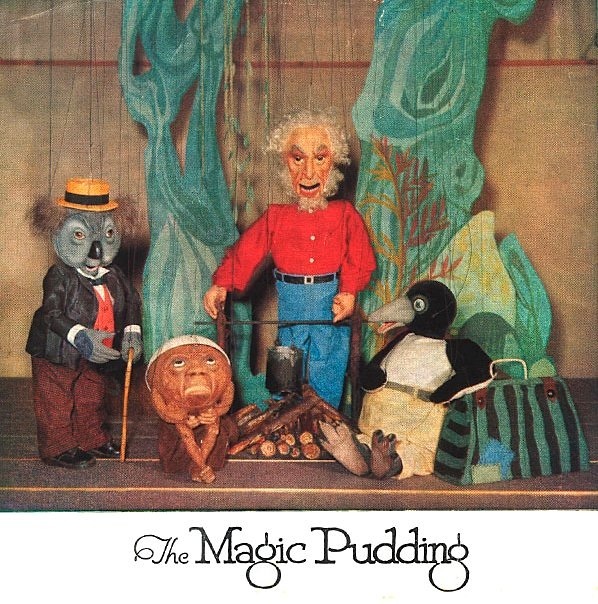
In November 1961, the Playhouse presented “One Day of the Year” by Fremantle born playwright and author Alan Seymour, who earlier was an announcer with radio station 6PM and later was the ABC Radio’s film critic. After a stint at 6KY, he was offered an announcing post at the ABC. He later became a writer for radio and television with the ABC and the BBC. The play “One Day of the Year” dramatised the growing social divide in Australia and questioned old values. Seymour wrote his controversial play in 1958 for an amateur playwriting competition, being inspired by an article in the University of Sydney newspaper Honi Soit lambasting Anzac Day. This was on the premise that the proud emblem of Australia’s military sacrifice was founded on confused ideals and often degenerated into a squalid orgy of drunkenness and street brawls. As a result, it was banned by the Adelaide Festival in 1960, but put on by a defiant amateur theatre group with a policeman stationed at the stage door. There was a bomb scare during a dress rehearsal at Sydney’s first season in 1961, which forced police to clear the theatre.
In 1964, Australian actor and writer Alan Hopgood’s successful play “And The Big Men Fly” was presented at the Playhouse. This play is about an Australian Rules Football team called the Crows. A team that isn’t very good, but are determined to win the 1963 Grand Final (The Adelaide Football Club, nicknamed the Crows was not formed until 1990, but went on to win the 1997 and 1998 AFL Grand Finals).
The prolific Australian playwright David Williamson began writing plays in 1967, to become Australia’s most bankable playwright, who along with writers such as Barry Oakley, and Jack Hibberd, brought many new and significant Australian plays to the stage.
Australian playwright – David Williamson in 1972
Photo courtesy of National Library of Australia [nla.pic-vn3774647]
In 1968, the Australian government established The Australian Council for the Arts under Prime Minister John Gorton (succeeded by the Australia Council in 1973 under the Whitlam government, which became a statutory authority under the Australia Council Act in 1975). This was to help nourish Australian theatre by establishing major state theatre companies and provide arts funding.
Margaret Ford in Bon-Bons and Roses for Dolly in 1972
In October 1972, “Bon-Bons and Roses for Dolly” by Dorothy Hewett was presented at the Playhouse. Dorothy Hewett (1923-2002) the “grande dame of Australian literature” was a feminist poet, novelist, librettist and playwright. She published 12 collections of poetry, three novels, an autobiography, 13 plays, and many articles and short stories. She was educated and later taught English in the 1950s and 1960s at the University of Western Australia. She was a member of the Communist Party of Australia, though she clashed on many occasions with the party’s leadership. Hewett intrigued and sometimes disturbed audiences with her often controversial plays. For example, abusive letters were sent to the play’s director Raymond Omodei at the opening of the play at the Playhouse, which starred Margaret Ford, and was full of explicit language. The ‘Crystal Palace’ in the play was based on the heritage listed Regal Theatre in Subiaco, which was built by Dorothy Hewett’s grandfather, and her father, Tom Hewett, was the manager when it opened as a cinema on 27th April, 1938.
From the 28th November 1973 to 2nd January 1974, David Williamson’s play “Jugglers Three” was performed at the Playhouse, being directed by Terence Clarke. Set against the background of Australian conscripts in the Vietnam War, Graham, a conscript, is just back from Vietnam and keen to see his wife Keren, a reunion complicated when Keren’s lover Neville arrives, followed by Neville’s pregnant wife. On top of this domestic comedy comes Graham’s reverberating question about the need to stop the war and the politics of protest.
In June-July of 1974, David Williamson’s play “The Removalists” was first performed at the Playhouse, directed by Aarne Neeme. “The Removalists” is about power: people who gain power, people who lose power and those who misuse and abuse power, specifically in relation to domestic violence. A husband treats his wife like a subservient maid and a tool for the gratification of his sexual desires. Determined to no longer be a victim and shift the balance of power back in her favour, she decides to leave her husband, and take their daughter and furniture to her new flat. Interestingly in 2010, this play was one of the last performances at the Playhouse Theatre before its closing.
In July 1975, actor Neville Teede presented playwright Jack Hibberd’s play “A Stretch of the Imagination”, directed by Aarne Neeme. A dramatic piece for one performer, an old man facing death, which blends comedy and pathos. It was presented in the Playhouse Greenroom, an area often used as a rehearsal and board room, located above the licensed cafe. After serving in World War II, the Bunbury born Teede studied in the English Department of the University of WA (UWA) before performing with the Old Vic in the UK. On his return to Western Australia he tutored at the UWA, acted with the National Theatre at the Playhouse and performed on television in “The Good Oil” and hosted “In Perth Tonight” with Garry Meadows and Joan Bruce.
November 1975 saw another David Williamson play, “What if You Died Tomorrow”, directed by Terence Clarke. and that was about the traumas of deserting regular employment and married life for the life of a writer and greater fulfilment. Cast included: Margaret Ford, Leith Taylor, Rod Williams, Robert Faggetter and Pippa Williamson.
What if You Died Tomorrow
Then in 1976, there was the David Williamson play “A Handful of Friends” directed by Aarne Neeme, which is about life in the film industry. It was never meant to be easy, but when a ruthless director makes his alcoholic friend the subject of his latest feature, tensions snap. Cast included: Robert Faggeter, Mary Haire, Pippa Williamson, Dennis Miller and Merrin Canning.
In March 1977, the David Williamson play “The Department” was directed by Aarne Neeme, in which a staff meeting of the Engineering Department in a College of Advanced Education is the occasion for an acute dissection of the workings of bureaucracy, and the absurd politicking that goes on as the academic politics are laid bare. The play is especially clever in its observations of human nature, given the large numbers of characters sparring and sparking off each other on stage at the same time. Cast included Leslie Wright.
Stephen Barry was artistic director from 1978-1981
Stephen Barry was artistic director of the National Theatre at the Playhouse from 1978-1981, a period in which the company enjoyed considerable popularity. Many international guest performers were used to entice patrons to the theatre. Celebrities such as Warren Mitchell (“Death of a Salesman” in 1979 and Who’s Afraid of Virginia Woolf? in 1982), Timothy West (Uncle Vanya in 1982), Tim Brooke-Taylor (Privates on Parade in 1980) and Judy Davis (Piaf in 1980).
Judy Davis stars in Piaf in 1980
Photo courtesy: Ivan King and Museum of Performing Arts
- Warren Mitchell found fame as Alf Garnett in the BBC television sitcom “Till Death Us Do Part”
-
- Timothy West is a British actor noted for his great power and command on the classical stage and radio, film and television.
-
- Tim Brooke-Taylor is an English comic actor who was popular at that time in the television comedy “The Goodies” (1970–1982).
-
- Judy Davis is an award winning Perth born actress who had recently appeared in the 1979 film “My Brilliant Career”, after graduating from the National Institute of Dramatic Art (NIDA) in 1977. As well as many notable film and television roles since then, she has won many acting awards, including two Golden Globe awards, three Emmy awards, one BAFTA and seven AFI Awards. She has also been nominated twice for an Academy Award.
Letter courtesy: Ivan King and Museum of Performing Arts
In 1979, another of Dorothy Hewett’s plays, “The Man From Muckinupin” was presented, being directed by Stephen Barry, in which Hewett draws from her own experiences growing up in rural Western Australia, with all of its gritty human achievements as well as the darker side of white regional history, as it dwelt with race relationships against a landscape which is harsh and intimidating. The play was commissioned by the National Theatre at the Playhouse as a festival occasional piece to celebrate the 150th anniversary of Western Australia.
1980 witnessed David Williamson’s “Travelling North”, directed by Stephen Barry. After a late-life marriage, a middle-aged Australian couple move to the countryside. Their life and tempestuous marriage is detailed. The crusty husband is a retired civil engineer who suffers a heart attack, following which they move up to Port Douglas. He is prone to be rude, despotic, arrogant and rub folk up the wrong way. Though, we do feel that there is a softer heart beating in there all along. In contrast, his wife is a sweet-tempered woman who believes in God and politeness. It is a heart warming play about a twilight love affair, much to the consternation of their conventional children.
For the 1982 Festival of Perth, held in February, the Playhouse presented the world premier of Dorothy Hewett’s “The Fields of Heaven”, directed by Rodney Fisher. This play unfolds in the wheat belt of West Australia, a locality where Hewett grew up. Depicting an image of an ideal place which is ruined by an attitude to life. The cast included: Natalie Bate, James Beattie, Ross Coli, Geoff Gibbs, Chris Greenacre, Maggie King, Lex Marinos, Catherine Richardson, Toni Scanlan, Patricia Skevington, Joan Sydney and Helen Tripp.
From 13th October to 5th November 1983, the Playhouse presented David Williamson’s “The Perfectionist”, directed by Brian Debnam. A couple are happily married with children. The husband is a successful academic, whilst the wife has sacrificed her own academic ambitions for domestic life and caring for their three sons. Then one day the wife decides that her children are old enough that she can now quit as a housewife and start to study. Against the will of her husband she employs a male childminder while she attends university. The husband becomes increasingly nervous about the presence of another man in the home, which brings their marriage into a crisis.
Part Two will deal with the liquidation of the National Theatre Company in 1984, and events leading to the Playhouse Theatre’s closure.
References:
-
- “History of Perth Theatre” by Marie Kathleen Fitzgerald
-
- “Theatre Australia (Un)limited: Australian Theatre Since the 1950s” by Geoffrey Milne
-
- “World Encyclopaedia of Contemporary Theatre: Asia/ Pacific” by Series Rubin
Related stories:
The National Theatre Company stories:
